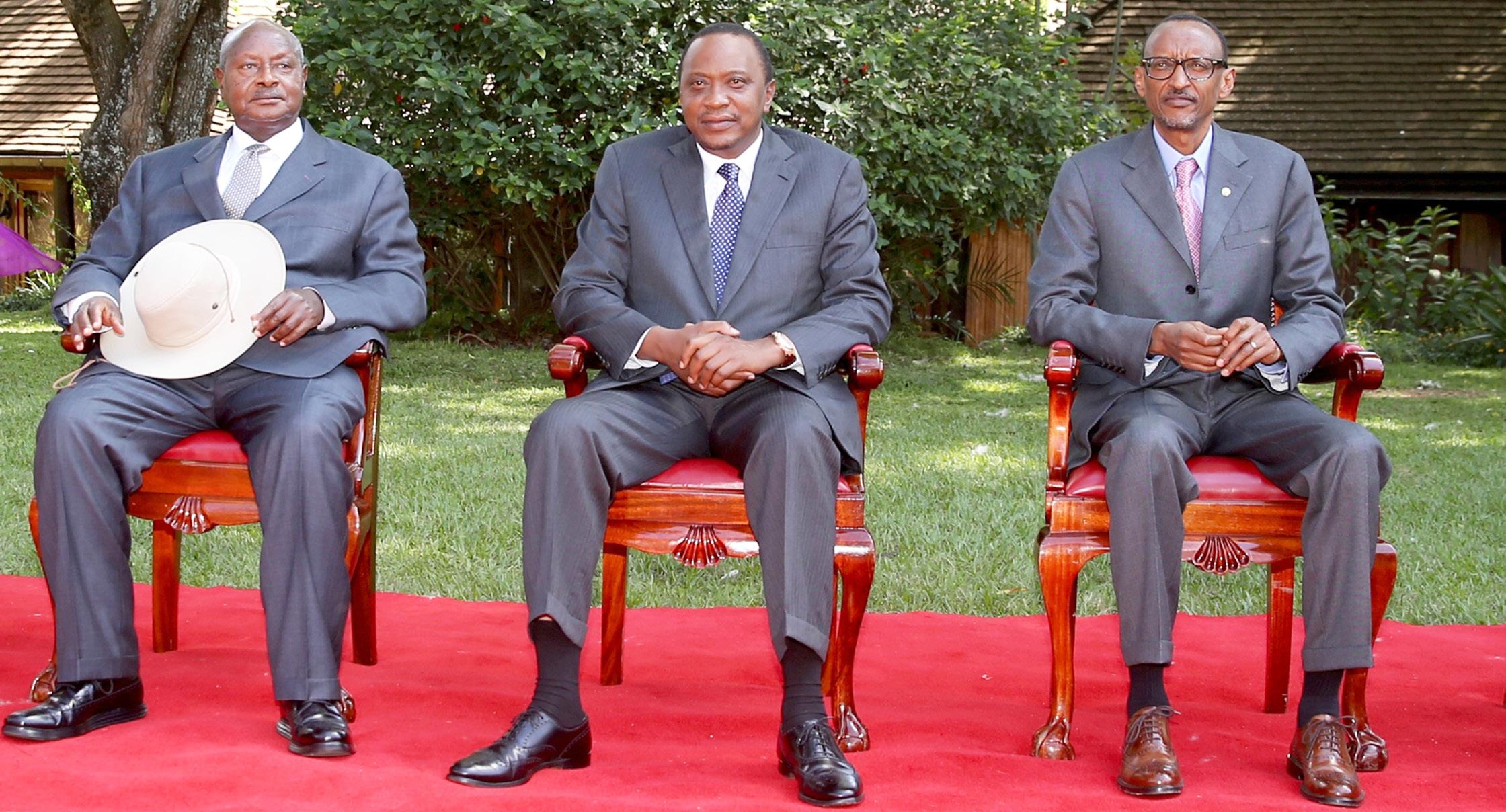
51 minute read
Pictorial
Presidents Paul Kagame(L), Uhuru Kenyatta(M) and Yoweri Museveni (R) during the 8th Nothern Corridor Integration Summit in Nairobi, Kenya.
EAC Religious Leaders attending a workshop on Peace and Security in Kigali in September 2014.
Advertisement
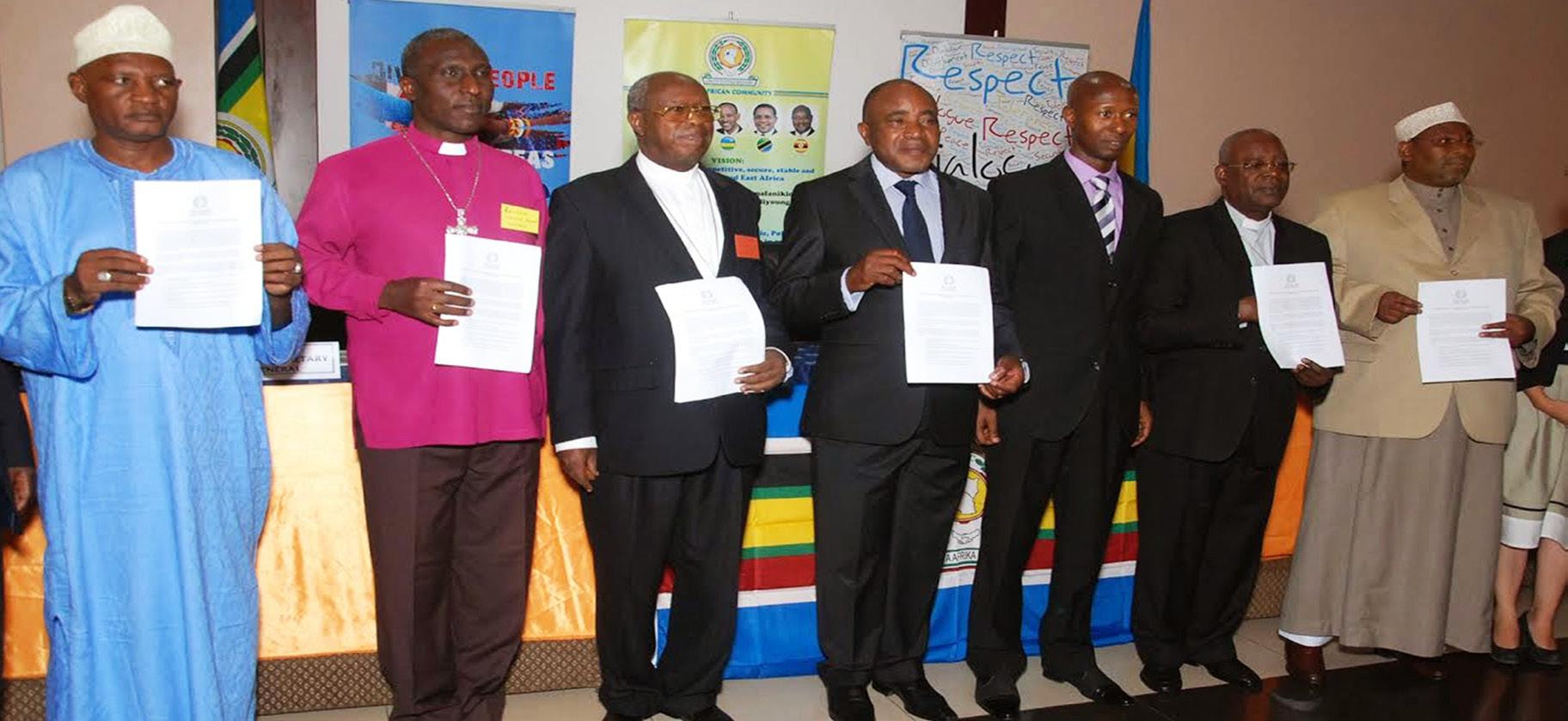
Infrasructure Ministers from Kenya, Rwanda, Uganda and South Sudan after signing a memorandum of understanding on management of Northern corridor airspace during the 8th Nothern Corridor Integration Summit in Nairobi, Kenya.
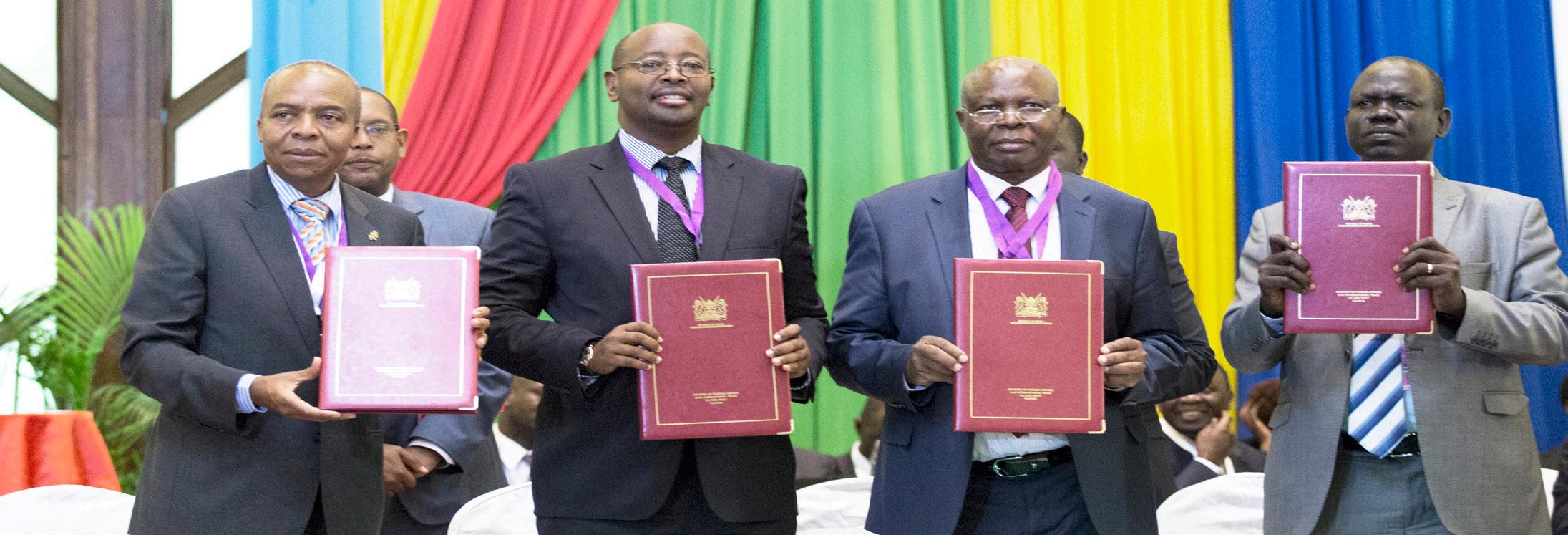
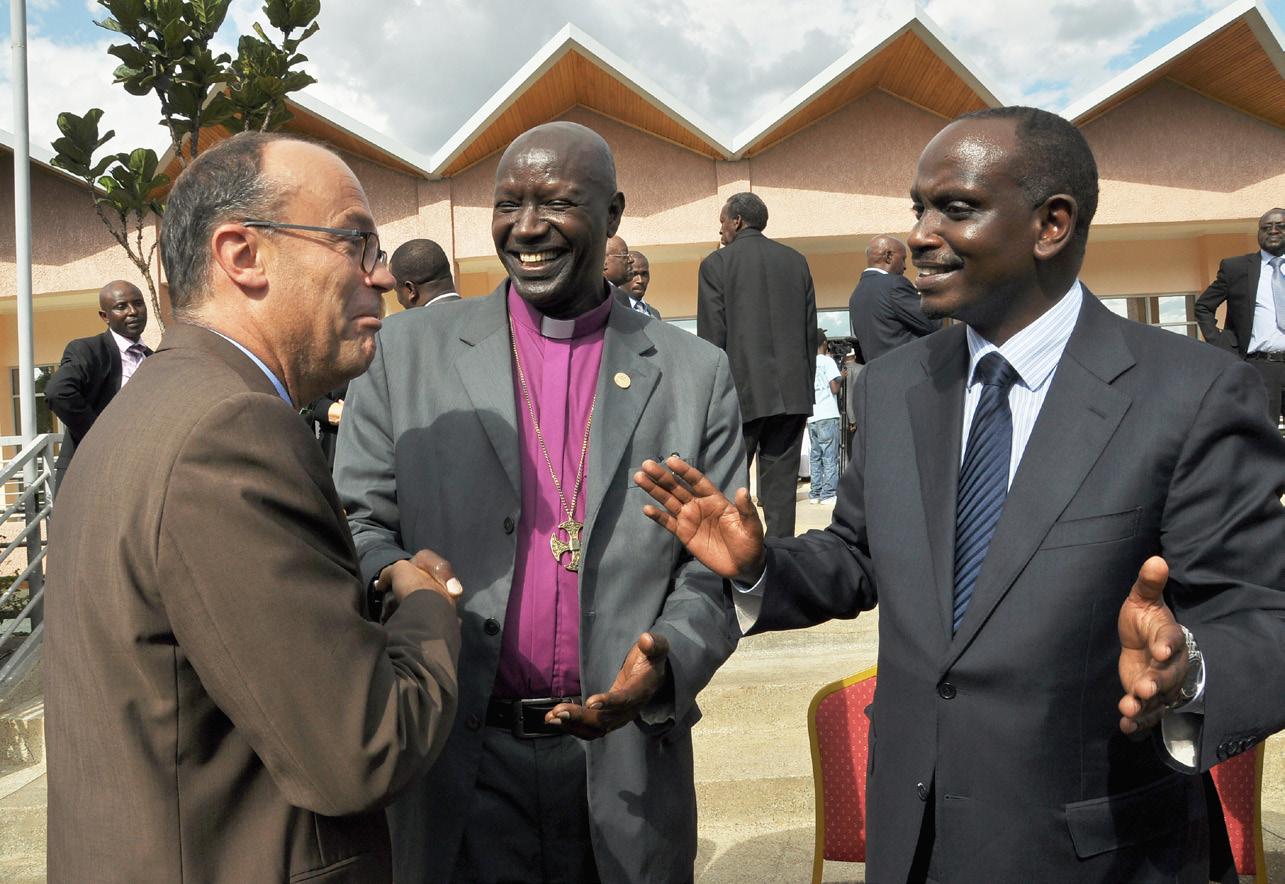
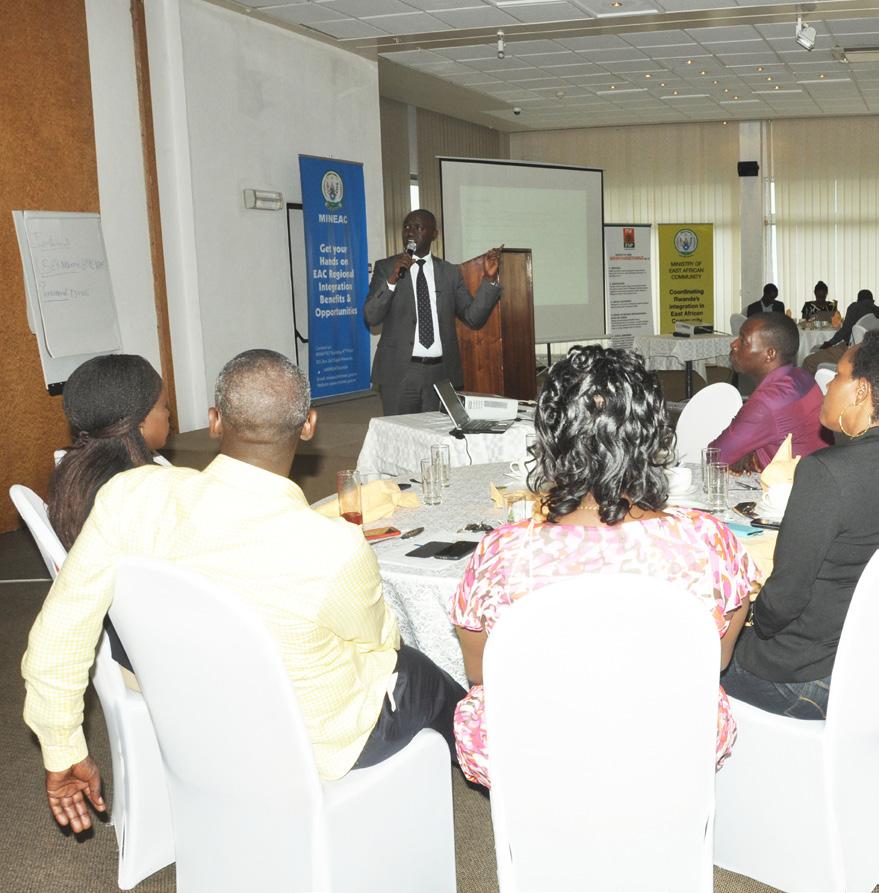
EAC Secretary General Amb. Richard Sezibera chatting with some of the Regional Clerics during the regional inter-religious conference in Kigali. Business Community breakfast meeting organised by MINEAC during the EAC week in Kigali on 18 Nov 2014.
Journalists attending a two day training on EAC Integration process organised by MINEAC at La Palisse Hotel in Kigali. People line up for check-in with IDs at Gatuna Border Post.
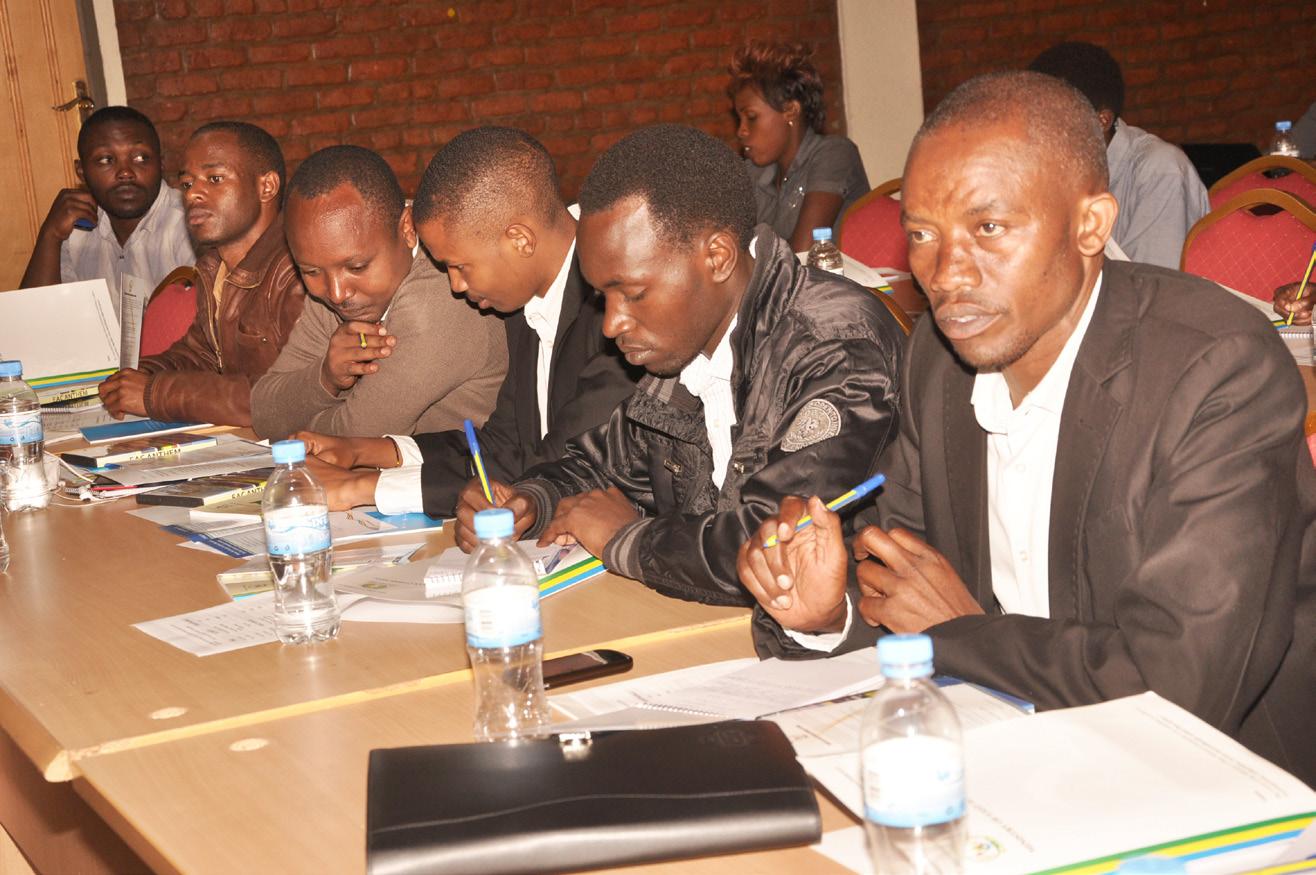
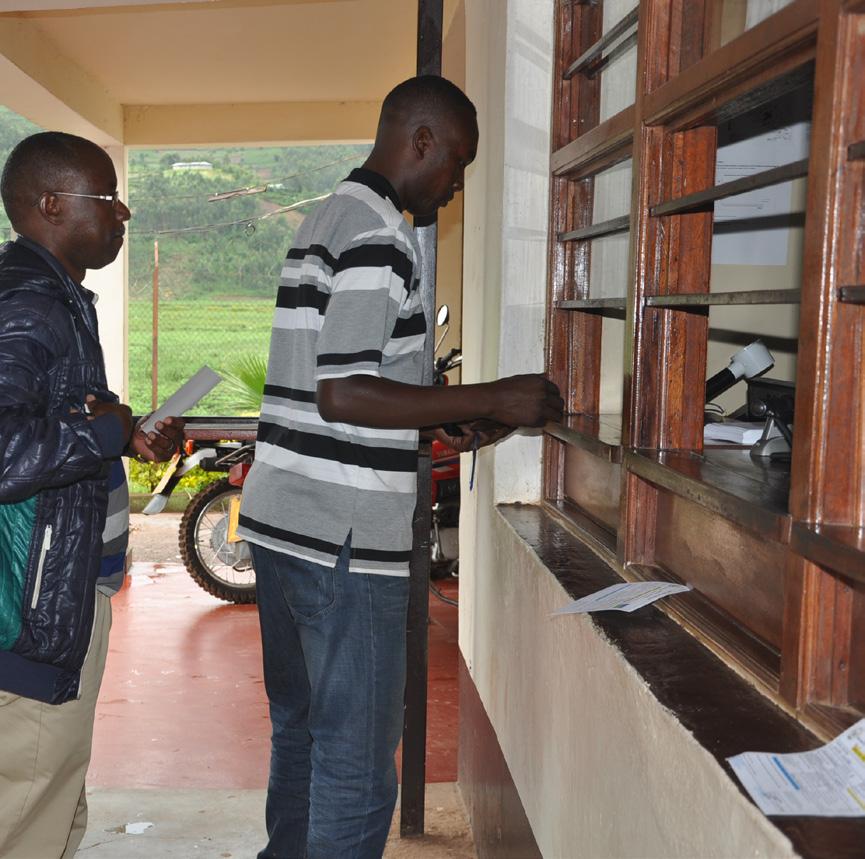
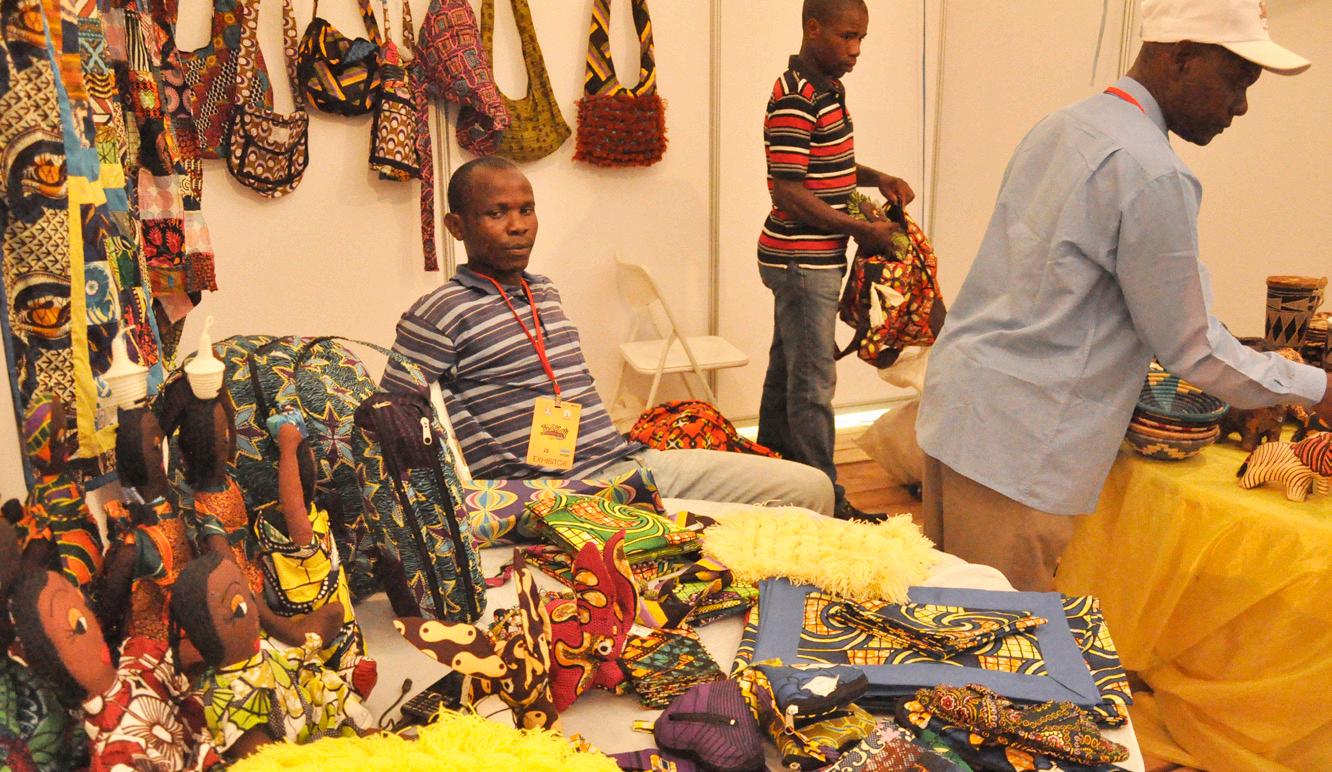
Regional Traders showcasing their products during Rwanda International Trade Fair in July 2014. All the EAC Partner States were represented at the fair. EAC Secretariat booth at the Rwanda International Trade Fair held in July 2014.
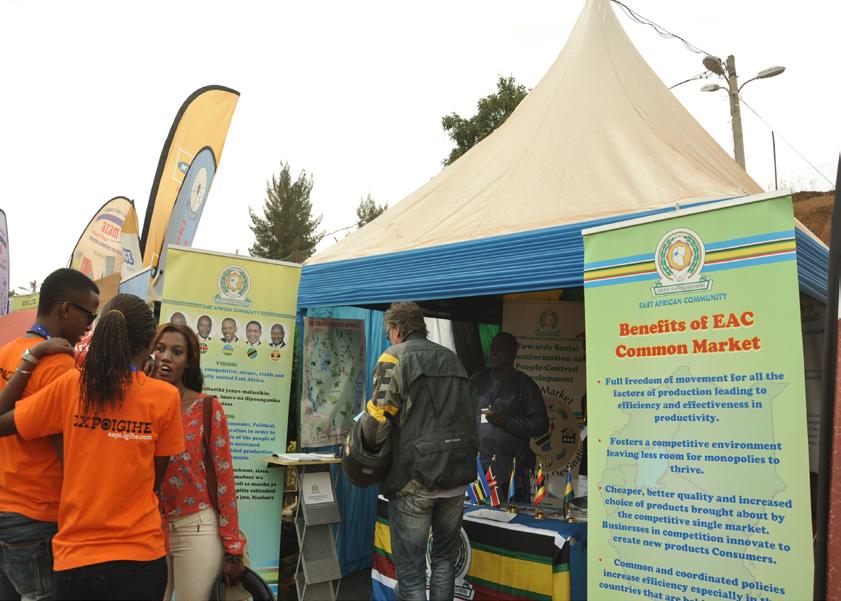
Regional News Presidents push for free movement of people
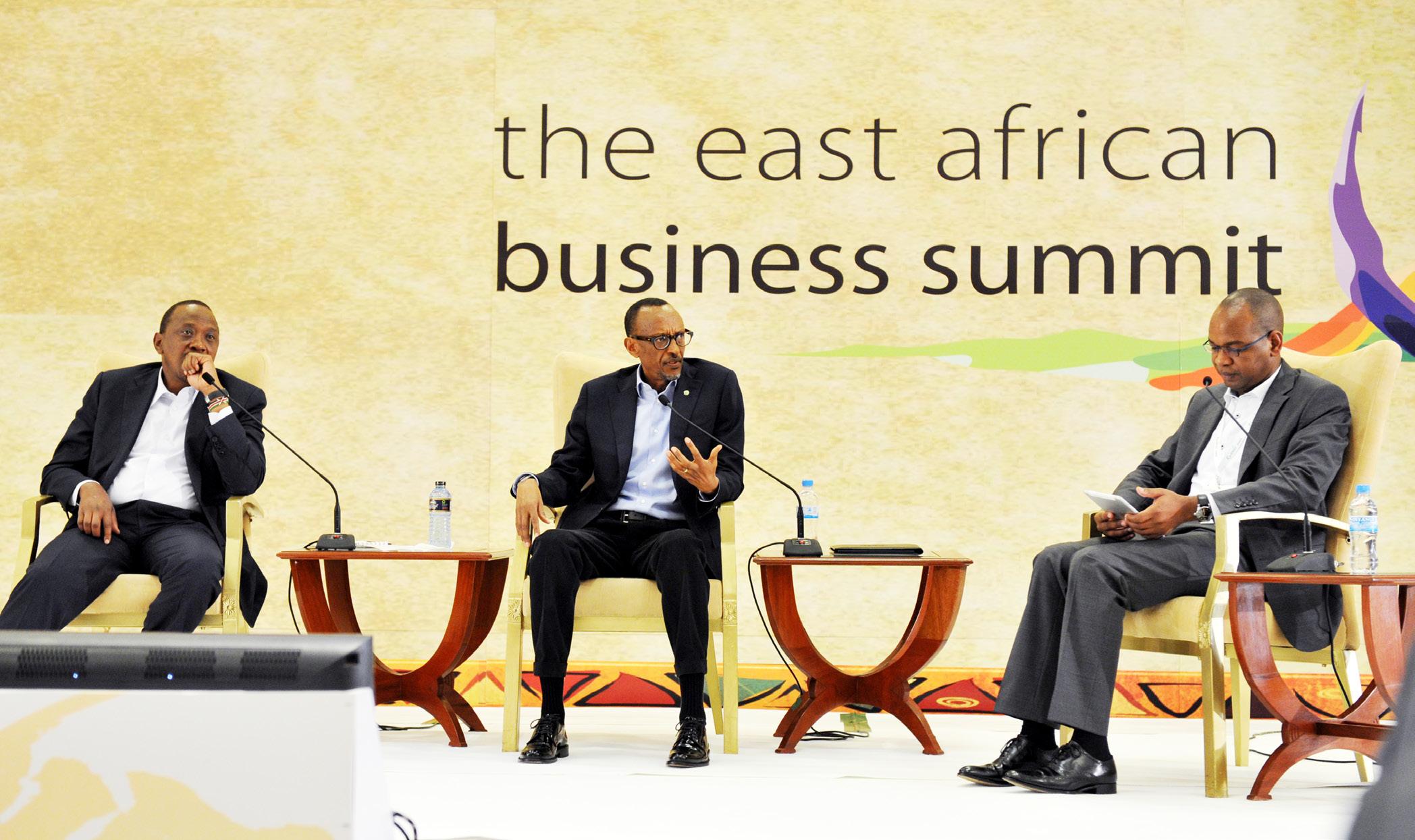
Presidents Kagame (M) and Kenyatta (L) with the session moderator Joshua Oigara, CEO KCB Bank Group.
President Paul Kagame and his Kenyan counterpart Uhuru Kenyatta have urged that allowing free movement of people among the Partner States of the East African Community (EAC) will promote economic, social and political cohesion.The Presidents said this during the East African Business Summit held in Kigali towards the end of 2014.
They said opening up borders by EAC Partner States would lead to employment promotion and trigger economic growth.According to the East African Common Market protocol, all the five Partner States of the EAC—Kenya, Rwanda, Tanzania, Uganda and Burundi— have the obligation to facilitate free movement of people, services, capital and goods. During the summit, Kagame and Uhuru noted that without opening up of the borders, the people of the community stand to benefit nothing. It was noted that despite the Partner States agreeing to allow free movement of labour, there have been fears and concerns that it would promote unemployment and take away opportunities for nationals if foreigners are allowed to move and work freely in other Partner States. But the Presidents challenged this misplaced belief, urging that the community will greatly benefit once the free movements are allowed.
President Kagame calmed down fears that opening up borders to foreign workers would lead to loss of jobs held by nationals. “In my office I have had Kenyans, Tanzanians, [and] Britons. If we don’t open up borders, we are limiting ourselves and we are blocking opportunities. If Rwanda doesn’t worry about Kenya why should other countries worry,” President Kagame said.“Working together, being able to identify what we can do to support each other is what can benefit Africa as a whole. The more we bring resources together, the more we work together, the more each Partner State benefits. We want every citizen to benefit and make sure that whatever they do earns them enough to change their lives,” the President added. President Kagame further noted that since
Rwanda joined the EAC seven years ago, it has benefited a lot, especially with access to the wider East African Market for Rwandan products as well as removal of some trade barriers. During his speech, President Uhuru Kenyatta also rooted for free movement of labour within the region and hailed Rwanda-Kenya progress on the same issue.
“Let us be frank with each other; we have not been able to move fast because of national fears, a sense of insecurity that if one opens up their people will be denied jobs and other opportunities. We must deal with these fears. We need to start talking about our people being the East African people,” Uhuru said. He further noted:
“Kenya and Rwanda have made progress on this. We have been clear on opening up our labour market to take full advantage of the labour that is available in the east African region.” “All we need is political will. Let us not be fearful of one another. Our people are the East African people. To develop through our own means, we have to stop the inward looking mentality that we inherited from our colonial master,” he noted.
President Uhuru reiterated the need for political will among all the partner states in order to achieve the set goals. Taking an example of the European Union, borders have been abolished and citizens move without restrictions. EAC was also urged to do the same.
“Kenya cannot succeed unless other East African countries succeed. We need to work together as East Africans to develop ourselves,” President Uhuru added.
The summit that was facilitated by the Rwandan Ministry of East African Community (MINEAC) and Rwanda Development Board (RDB) was held a year before the December 2015 target when the EAC Partner States are expected to have reached key benchmarks allowing for the free movement of people, goods, services and capital across the region.
As a way of promoting free movement of people within the region, Rwanda, Kenya and Uganda have introduced the use of National Identity Cards (IDs), student’s identity cards and voter’s cards to those without IDs to be allowed to move to each of the three countries. This initiative has greatly benefited the citizens of the three countries especially traders, students and skilled workers.
Those travelling present their IDs or any other nationally recognized document as a travel document which also works both at the borders and airports. John Bosco Talemwa an agricultural expert at the Rwandan Ministry of Agriculture normally travels around the region.
He says that it would be better for Tanzania and Burundi to adopt the use of ID cards.
He observed that many Rwandans would want to travel to Burundi or Tanzania using ID cards but they can’t.
He said: “People are now reluctant to get passports; we have now resorted to IDs but sometimes I want to cross to Bujumbura and I forget that I have to use the passport. I think other countries should adopt it [ID] to facilitate our movements.”
Rwanda’s closest trade partners include Burundi and Tanzania. Rwanda exports much to Bujumbura while some of her imports and exports pass through the port of Dar es Salaam port in Tanzania.
Increased trade with other EAC partner states
Since Rwanda joined the EAC, her exports to the region have been growing. This has been the same with imports.
Statistics from the National Bank of Rwanda (BNR) released in August 2014 show that Rwanda’s exports to the EAC region grew by 38.6 percent to $97.7million in the first half of the year, up from $70.7 million in the same period in 2013.
The main export commodities included tea, raw hides and skins of bovine, coffee, steel and iron rods, vegetables and malt beer.
During the same period, Rwandan imports from other EAC partner states increased by 3.7 percent from $239 million to $247.8 million. Major imports commodities were cement, palm oil, fats and oils, fertilizers, second hand clothing and sugar. The central bank reported that Rwanda’s trade deficit with other EAC Partner States reduced to $150 million from $168.5million. July-Dec 2014 29
Regional News TOYOTA Tsusho picked for Consultancy on Regional Oil Pipeline
Governments of Kenya, Uganda and Rwanda have picked Japanese engineering firm Toyota Tsusho as the single consultant to carryout the feasibility study, design and supervision of construction of the oil pipeline that will see Kenya and Uganda start exporting crude oil.
Toyota Tsusho beat off competition from other eight firms that had been shortlisted for the job, which will see the project that is expected to cost an estimated USD4billion take off.
The crude oil pipeline, with a distance of 1,500km from Hoima in Western Uganda to Kenya’s port of Lamu, connecting to South Sudan at Lochikar basin, is one of the key northern corridor integration projects, bringing together the governments of Kenya, Uganda and Rwanda.
Toyota Tsusho is expected to complete the study by April 2015. The awarding of the consultancy contract to Toyota Tsusho comes after the International Finance Corporation (IFC), a member of the World Bank Group, pledged financing worth USD600million to the oil pipeline. The funding is part of USD1.8 billion loan for projects in the Horn of Africa.
The Principal Secretary for Energy in Kenya Joseph Njoroge said the Hoima-Lokichar-Lamu crude oil pipeline will be developed as a single project but then split into two lots for each country—Kenya and Uganda—to implement the part that is in their jurisdiction. It is expected that—and this is the commitment made by the two implementing governments— the Hoima-Lokichar-Lamu crude oil pipeline will be completed in 2017/2018 so that crude exports from the two countries can start flowing.
Kenya and Uganda have both found huge deposits of commercially viable crude oil and they are taking steps to commercially exploit them through exports when production begins in less than five years ahead.
Uganda estimates that its crude oil deposits at 6.5 billion barrels while Kenya estimates oil discoveries in the south of Lokishar basin at 600 million barrels.
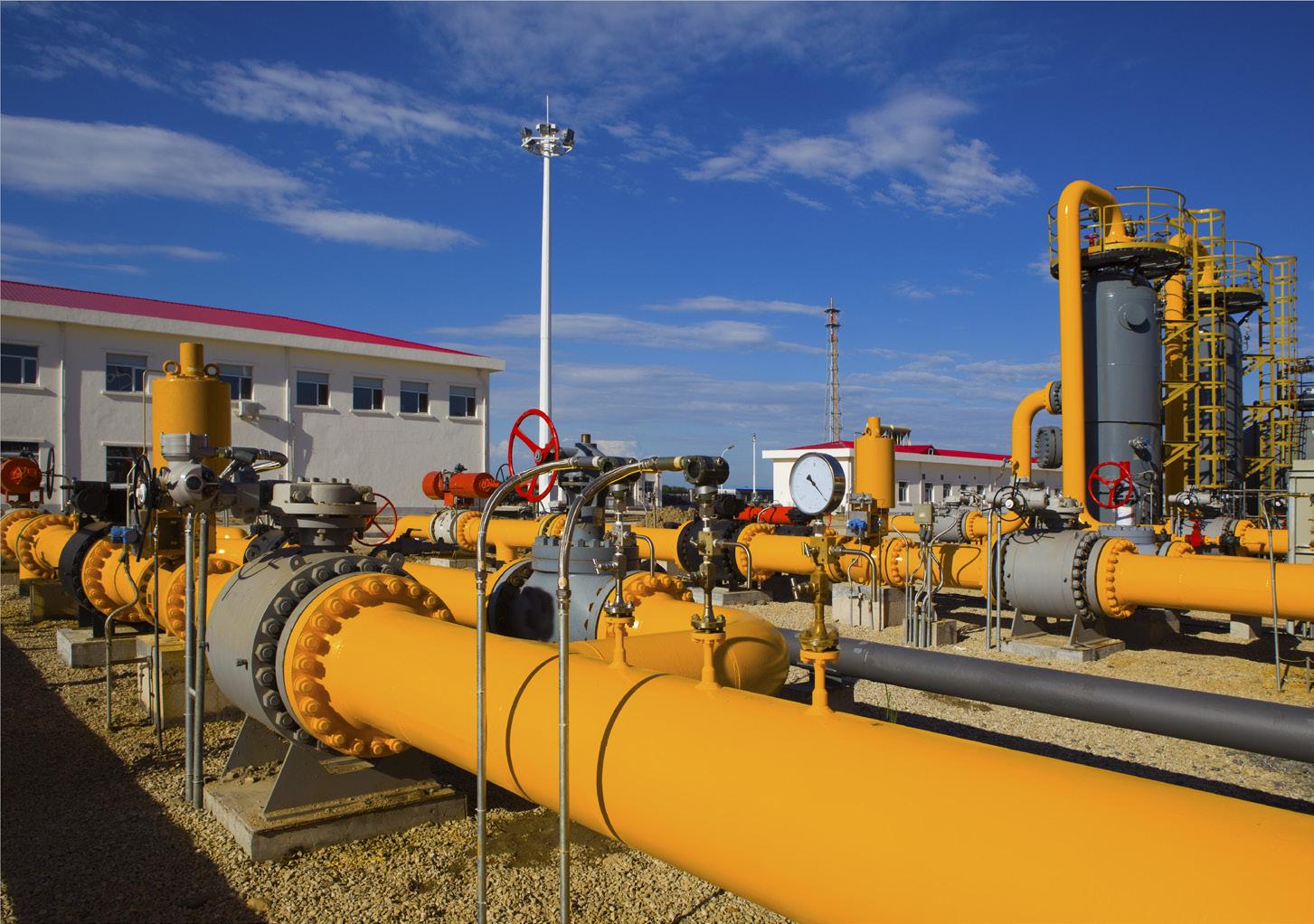
Oil Pipelines. The same will run from Kenya via Kampala to Kigali.
Refined Petroleum Products Pipeline to Kigali
Whereas the Hoima-LokicharLamu crude oil pipeline is making progress, the three governments are equally paying attention to another pipeline that will transport refined petroleum products within the three countries.
Refined petroleum products will flow between the Kenyan city of Eldoret, to Uganda’s capital Kampala and then Kigali.
The three governments through their Joint Coordinating Commission (JCC) have already invited bids for Expression of Interest for an engineering,
procurement and construction of the proposed refined petroleum products pipeline running all the way from Edoret through Kampala to Kigali.
The Eldoret-Kampala-Kigali refined petroleum products pipeline is one of the Northern Corridor Integration Projects that aims to accelerate regional development.
According to the invitation to express interest which Integration Affairs Magazine has seen, the pipeline will be an extension to the existing Western Kenya pipeline system at Eldoret which is owned and operated by the Kenya Pipeline Company (KPC).
The Eldoret-Kampala-Kigali Pipeline will serve, among others, the markets of Uganda, Rwanda and the neighboring States of Tanzania, Burundi, South Sudan and the Democratic Republic of Congo.
According to the invitation to express interest, the assignment to put in place the pipeline has two lots where lot 1 comprises of approximately 350 kilometers from Eldoret in Kenya to Kampala in Uganda.
This will involve construction of a multi-products pipeline with 12 inch diameter.
The second lot comprises conception of a detailed design, material procurement, construction, installation and commissioning of a multiproducts pipeline from Kampala to Kigali with the length of 434km. The same pipeline will have storage terminals in Kampala and Mbarara both in Uganda and Kigali.
This lot also comprises construction of mainline pumps, intermediate pump stations and road or rail loading facilities for tankers at Mbarara and Kigali.
Government officials, economists and the members of the Rwandan private sector have all welcomed the initiative to serve Rwanda with refined petroleum products through the regional oil pipeline.
According to the Rwanda Utilities Regulatory Agency (RURA), Rwanda’s petroleum importation is huge as the country doesn’t produce any petroleum—although exploration activities have been ongoing to establish whether there is oil in Western Rwanda— especially to power the rapidly increasing number of personal and commercial vehicles and heavy machinery used in the factories.
RURA says that Rwanda currently imports petroleum products through either the central or the northern corridor in East Africa.
The cost of oil imports is on average 25% of total import costs and accounts for 55% of the entire export revenues, according to the information found on RURA’s website.
The demand for petroleum products, says RURA, is forecasted to grow at an average of 10% each year between now and 2020.
The cost of procurement has an important macro-economic impact.
The delivery of refined petroleum products to Kigali is expected to among other things; help lower the price of refined petroleum products due to the foreseeable reduction in transport charges and other risks associated with transportation of petroleum.
It is also expected that the Rwandan upstream petroleum sector will grow due to investments expected in construction of large-volume fuel storage facilities.
This will provide jobs to Rwandans and support the country’s ambition to achieve 11.5% annual economic growth in the period from 2013 to 2017 .
Regional News Traders Commend Nemba One Stop Border
Gone are the days when traders and transporters used to spend hours at the Nemba border post between Rwanda and Burundi.
The delays at the border would not only cost time but also money and this had negative implications on the traders’ businesses. With the establishment of One Stop Border Post (OSBP), the delays that characterized the Nemba border have become a story of the past.
It now takes four to seven minutes for travelers, especially those involved in cross-border trade to clear their goods at the border post located in Rwanda’s Bugesera District, Eastern Province.
Under the OSBP project, customs and immigration officials from both countries operate in the same building, something that eases clearing of goods and travel documents for those entering any of the two countries.
Before the OSBP project, each country had its own immigration and customs offices, thus causing travelers to move from one office to another to have clearance.
This resulted into delays for travelers. Issa Mugarura, an exporter of construction materials to Burundi and the Vice Chairman of Rwanda Truckers association, believes that the introduction of the OSBP at Nemba has greatly eased movement of traders and led to the increase in the number of people crossing the border.
He says: “We no longer use Akanyaru border; we now use Nemba border.
It has eased our movement because officials are now working under the same roof; even one official can clear you to enable one to cross immediately without delays at the border.” The African Development Bank (AfDB) injected $45 million for construction of the Nemba OSBP including the construction of 20kms highway from Mayange Sector in Bugesera, that connects to Kirundo on the Burundian side and it is operating smoothly. According to Olivier Kabera, the coordinator of the Single Project Implementation Unit (SPIU). In the Ministry of Infrastructure, more OSBPs are in the pipeline with the aim of facilitating trade and investment in Rwanda. Some of the new OSBPs that will be launched include Gatuna OSBP, Rubavu (Grand Barriere) , Bweyeye and Cyanika OSBP.
Others under construction include OSBPs at Kagitumba border with Uganda and Rusumo border with Tanzania.
“Rusumo OSBP is 95 percent complete and it will be fully completed by mid-December.
If all these projects are finalized , we expect the time reduction from the border crossing from hours to minutes,” he said
“Imagine a car transporting cows spending 24 hours at the border due to verification process. There is a cost of delay that has an impact on the market price,” Kabera said.
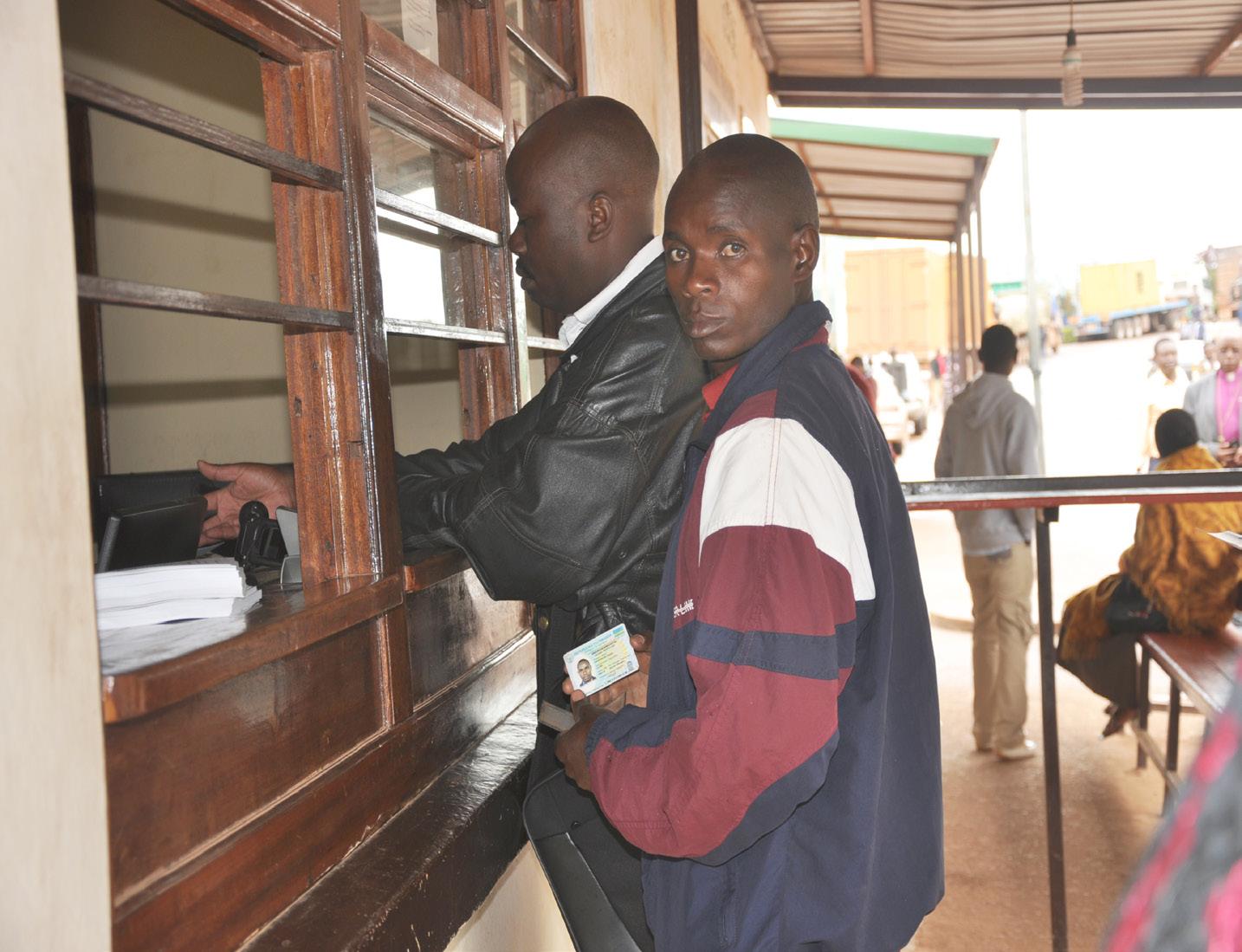
Travellers clearing at the Border Post.
Regional News EAC’s curriculum to boost education sector
Students in the partner states of the East African Community (EAC) will follow a uniform curriculum if all the five partner states harmonize their curriculums
The issue of harmonization of education curriculum within the EAC Partner States has always been an outstanding matter.
Technical experts have already completed the drafting of a regional framework and structures on the curriculums to be synchronized.
In August 2014, curriculum experts from Rwanda and other EAC partner states met in Nairobi, Kenya and came up with the common position that will be approved by the EAC council of ministers.
If the common draft is adopted by the council, then the harmonization of curriculums will be at the right time to commence the implementation.
Augustin Gatera, an official from the Rwanda Education Board (REB) and a focal point representing Rwanda says that the report awaits adoption by the council of ministers before work to harmonize education curriculla of the five Partner States begins.
“We have done our part as technicians. What is remaining is for the council of ministers to adopt the common report.
If implemented, it will promote free movement of students from all the five countries,” Gatera said.
“Teaching will become easy and teachers will be free to move because all the countries will be teaching the same subjects not like the current system where we have different systems,” added Gatera.
The current system does not favour movement of students from one country to another since countries have different curriculums.
According to Gatera, if the harmonization of curriculums is implemented, primary and secondary schools in all the partner states will be teaching the same subjects, same teaching hours, same years as well as other issues that the council of ministers might advise to add.
The process to harmonise curriculums started in 1998 with the three founding partner states of EAC—Uganda, Kenya and Tanzania—exchanging their national curriculum documents for review and analysis.
The process has produced country position papers on areas where the curriculum of a particular country converges or diverges with the other partner states. Gadson Mutsinzi is a law student at the University of Rwanda (UR). He came from Uganda in 2011 when he was in form four but he was advised to go back to form two in Kigali due to the new system he had joined.
“I was affected since I had just come from a different system. If it is [harmonised curriculum] implemented it will facilitate many [students] and we will be able to move freely to various regional schools,” Mutsinzi said.
Article 5 of the treaty establishing EAC clearly states that in order to promote the achievements of the objectives of the community, Partner States agree to undertake concerted measures to foster cooperation in Education and Training within the Community.
This puts an obligation to the five partner states to implement a uniform education curriculum for the benefits of the people.
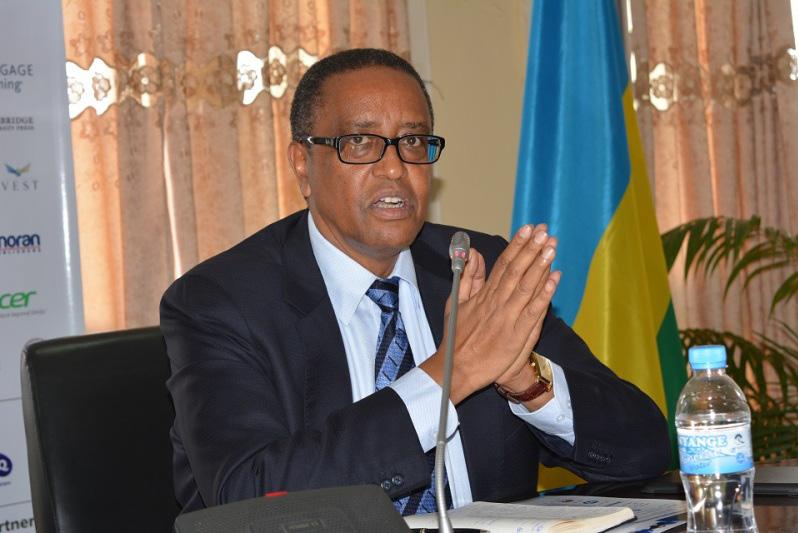
Minister of Education Prof. Silas Lwakabamba
Regional News EAC Single airspace to stimulate economic growth
Regional air transport to cost less.

During the 8th Northern Corridor Integration Summit held on 11 December, 2014 in Nairobi, Kenya, Governments of Rwanda, Kenya, Uganda and South Sudan signed a Memorandum of Understanding on Management of Northern Corridor air space. The MoU was overdue as it is expected to help the four countries push the airlines operating in their territory to reduce the cost of airfare to travel in the region to a tune of 40 percent, which is still under negotiations that should come to an end this year. According to the Communiqué issued after the Summit, the Heads of State directed the Minister of Infrastructure of Rwanda, James Musoni, to convene a meeting of Airline Industry Stakeholders to finalise negotiations on the 5th Freedom Traffic Rights on the EntebbeNairobi-Juba-Nairobi route by 31st December 2014 and address all outstanding issues to reduce the cost of air travel in the region and report to the next Summit, which will be held in Kigali, Rwanda in March 2015.
Experts believe that with liberalisation of East Africa’s airspace and reduction of air fares, the regional economies are set to benefit from rapid economic growth arising from easy and affordable movement of persons and goods within the region. The removal of restrictions in aviation sector will attract more airlines to tap into the regional market as this will magnetize more investments, experts say. In addition to Kenya, Rwanda, Uganda and South Sudan, Tanzanian and Burundi governments are also eager to liberalise the air transport so as to make the East African Community (EAC) accessible to the people in the region and foreigners via air transport. If the harmonization of the Aviation sector is achieved, countries will be able to exchange experts, skills as well as see a reduction in transportation fares which will see business operators within the community increasingly using air transport. There are fourteen projects under aviation sector that need to be harmonized and countries are trying all the possible means to conclude the negotiations. What is needed as a region is to have the aviation market liberalized to facilitate the business operations and travellers. Aviation sector is considered among the biggest sectors that will provide a huge contribution towards the economic development of the region. In Rwanda the sector has been growing tremendously for the last two decades.
RwandAir, the national flag carrier, has grown recently in terms of number of Aircrafts as well as new destinations, currently at 16 and it is now targeting to fly to Asian cities of Shanghai, Guangzhou and Beijing, all in China, and the Indian city of Mumbai. The airline flies to all the East African countries. Currently, Rwandair has a fleet of eight Aircrafts. Rwanda’s aviation industry has experienced rapid growth with more airlines adding Kigali to their destinations.
The most recent entrants include, Qatar and Turkish Airlines.
Tony Barigye, the Public Relations officer at Rwanda Civil Aviation Authority (RCAA) says that more Airlines are expected to tap into regional countries if the sector is harmonized. Augustin Mugabo, a businessman who normally imports and exports goods in East Africa observed that it was imperative for the regional countries to embark on liberalizing all the transportation sectors to ease the movement of goods and services.
Regional News EAC religious leaders discuss peace and stability
Rwanda hosted the East African Community religious leaders who had gathered in Kigali to discuss and come up with a clear strategy to work together in fighting insecurity in the region as well as promoting peace. The one week regional conference that brought together religious leaders from EAC partner states aimed at discussing and strategizing on how to contribute towards peace and stability in the region. The conference was jointly organized by the East African Community Secretariat based in Arusha, Tanzania and the Ministry of East African Community in the Republic of Rwanda. The objective was to devise means to stimulate a proper approach to preventing conflicts in the region. With an apparent lack of peace in some of the East African countries notably Kenya and South Sudan, some religious leaders believe that the failure to act positively is due to intruders who masquerade as believers yet they have intentions of further dividing the church and Muslims. “What we have done is not enough and religion should not be a dividing factor. It must be a connecting factor. Sometimes, there is politicization of religion . This should not happen, and we need to mitigate and prevent these conflicts together in the region,” Bishop Michael Taban Toro, Chairperson of South Sudan council of churches noted.
Bishop Taban further mentioned that in South Sudan, the church has tried its best to organize dialogue between the two fighting factions but this was not enough to bring lasting peace to South Sudan.
“We have always tried to bring different fighting groups together. We have been trying to talk to government, people in oppositions so that they can dialogue and solve the problems in non-violent means. It’s possible that religion has the potential to end conflicts in Africa. AU (African Union) is saying they need Africa free of conflicts by 2020 and they cannot achieve it without the involvement of the church. It’s possible and it’s just a matter of time,” Bishop Taban said. Francis Kaboneka the Rwandan local government minister noted that the Conference came at a time when threats to peace and security in the region had become more and more diverse, complex and sophisticated in nature, requiring an array of responses one of which is effective collaboration among key stakeholders, of which religious leaders constitute an important and indispensable part. He informed the delegates that for the past 20 years, the government of Rwanda has been guided by the principles of reinstating people’s dignity, granting all Rwandans equal rights and ensuring hope for the future. “Our concerted efforts have been focused on building an effective state, ensuring respect of the rule of law, unity and reconciliation, restoring and maintaining security, strengthening accountability, transparency and citizen participation mechanisms,” Kaboneka said. All these have contributed to good governance practices in Rwanda through partnership with all stakeholders including religious leaders and believers, he said.
The Secretary General of East African Community (EAC) Amb. Dr. Richard Sezibera observed that the use of religion to justify the use of terror as a basis of religious intolerance is currently the most urgent challenge in the region and the world at large. He said that one of the most important findings of cross-cultural conflict resolution research is that religion is a perennial and perhaps an inevitable factor in both conflict and conflict resolution.
“Learned religious scholars and leaders tell us that it is not religion but superstition in the name of religion that is responsible for these negative practices,” Amb. Sezibera said. The EAC boss further noted that it was the right time for religious leaders to re-organize themselves and come up with a clear strategy to help prevent conflicts in EAC.
EAC and Local Goverment ministers posing with regional religious leaders during the conference.
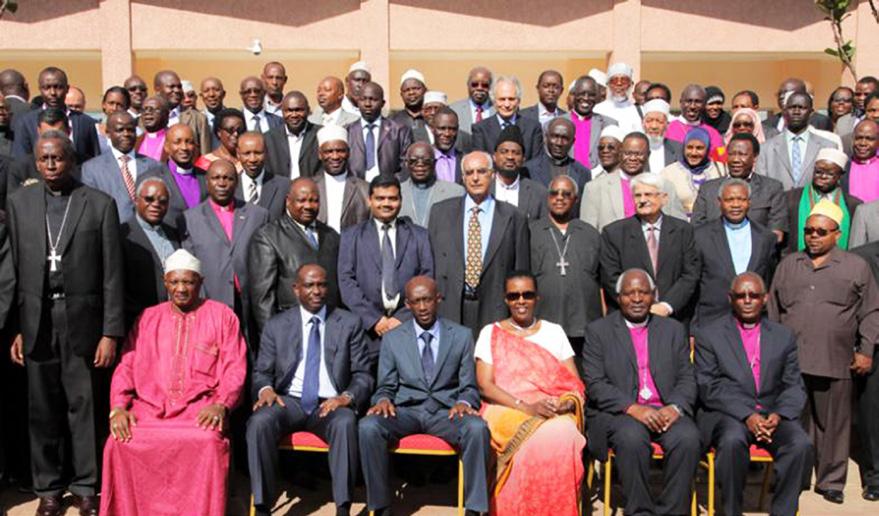
Opinion Food Security Key For EAC Development
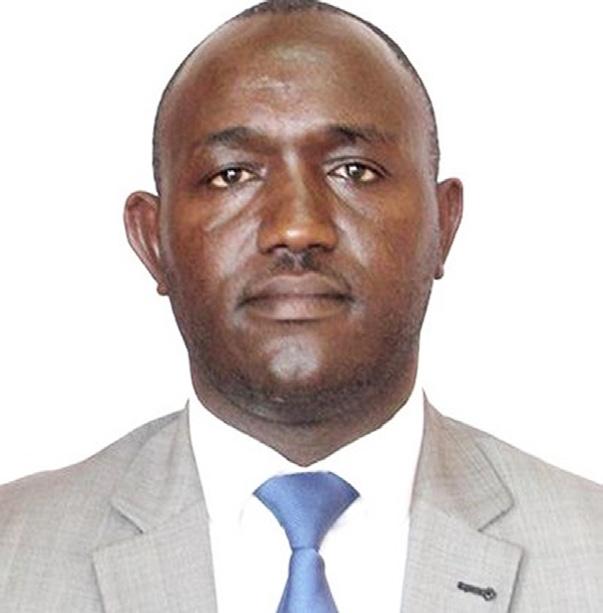
By Nathan Gashayija
Agriculture and food security sector draws its mandate from Chapter 18 of the Treaty establishing the East African Community (EAC). Articles 105 and 111 of the Treaty state that productive sectors and Agriculture in particular are the basis for the livelihood of the people as they directly address the problem of low productivity, unemployment and food security in the region. The biggest sector is agriculture. This sector is the cornerstone of the livelihood of the EAC people. It employs the majority of the East African People and can be transformed into fostering the region’s quest for sustained economic growth and development. Strategies for developing this sector are meant to create the requisite opportunities for enhancing the welfare of the people of East Africa through improved competitiveness, regional and global integration. The goal of co-operation in agriculture is to improve the overall well-being of the people whose principal occupation and way of life is based on agriculture. Articles 105 to 110 spell out a range of policy objectives which Partner States should adopt to increase agricultural productivity and achieve food security. Articles 105,106,107,108,109 and 110 cover the following areas of scope of cooperation in the sector: Seed Multiplication and distribution, Livestock multiplication and distribution, plant and animal diseases control irrigation and Water Catchment Management, and food Security.
What has been achieved so far?
The current progress so far includes the development of a number of policies in this area including the EAC Agriculture and Rural development Policy. This Policy is directed at harmonizing Partner States food security policies and legislation, promoting Research and Development and Improving transboundary infrastructure to curb disease of trans-boundary nature. In addition, regional fertilizer Policy calls for harmonization of standards, regulations and tax regimes in fertilizer for agriculture productivity. This will lead to elimination of sub-standard fertilizers in the market and increased access hence increased agricultural productivity. Regional seed policy development is in the process of being developed. Its overall impact when approved will be to facilitate operations of regulatory agencies involved in certification for seeds in transit within the EAC region, simplify seed export/import documentation in most countries, facilitate harmonized protocols and procedures for variety evaluation, release and registration. EAC Strategy on Prevention and Control of Trans-boundary animals and zoonotic disease: this strategy led to the development of EAC Avian Influenza Response Project 2008-2012.
The Avian influenza response project aimed at contributing to the socio- economic welfare and public health in the EAC by minimizing the impact of Avian Influenza and was specifically designed to harmonize, synergize and coordinate National Action Plans for Avian Influenza and other Transboundary Animal Diseases (TADs); and to enhance sustainable capacity of the EAC Secretariat and National Veterinary Services. This led as well to establishment of inspection points at the border posts like at Gatuna ran by Rwanda Agricultural Board. So far 13 staple crops standards have been developed and under implementation by the National Standards bodies including Rwanda Standards Board.
Existence of EAC SQMT Act commits Partner States to ensure that domestic standards are fully harmonized with regional ones; this has increased the trade of processed agricultural commodities within the region and beyond. EAC Sanitary measures for fish and fishery products and consists of two
Opinion
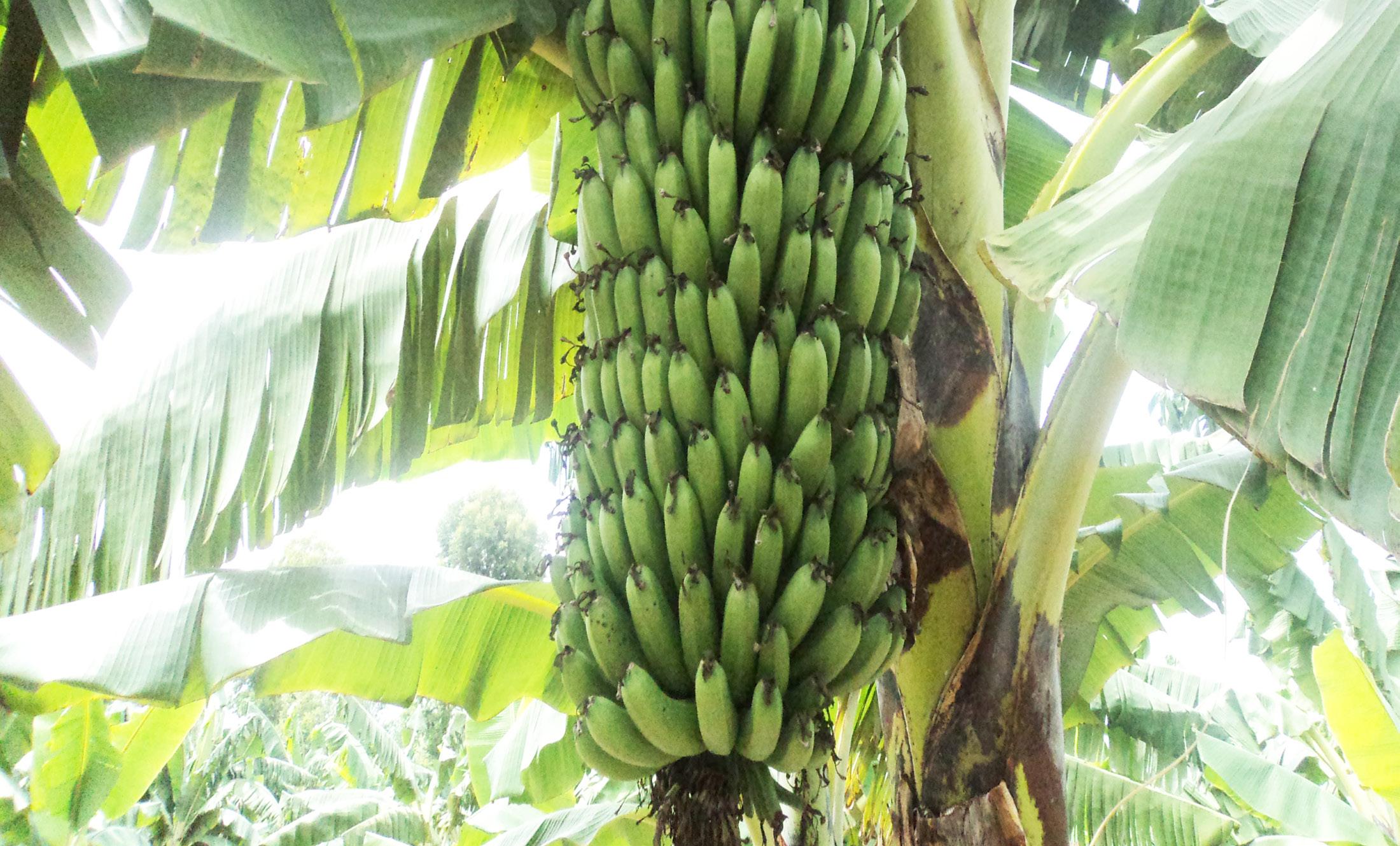
major accomplishments, Manual of Standard Operating Procedures (MSOP) and the Inspectors guide for fisheries officers use (IG).
The aim of SPS measures is to protect health, enable EAC fish and fisheries products access the international markets and consequently promote the fisheries sector in the EAC.
The harmonized EAC SPS measures on Fish and Fishery Products will greatly facilitate safe trade within the Community and between EAC and other trading partners.
What is the way forward?
The regional strategic interventions of enhancing supply capacities in agriculture entailed identifying high value agricultural subsectors for which the region has a competitive advantage and capitalize on investments that can facilitate Partner States to transform their respective economies. Others include the development of an EAC Strategy Plan on agriculture and Food Security; harmonization of regional policies; regulations, SPS, and pest control standards; development of regional programmes on bio-safety and bio-technology, trans-boundary disease control and emergency preparedness; formulation of special trade regime on SME cross border trade,strengthening of national Agriculture/Livestock institutions, farmers, traders and processors associations. Others include but not limited to the implementation of 20102015 EAC Food Security action, ratification of the Sanitary and Phyto sanitary (SPS) Protocol, follow up on the establishment of the EAC commodity exchange program. Final drafting of regional Framework for control of Aflatoxin in agriculture production chain is ongoing.Follow up on finalization of EAC Food Security and Nutrition Policy Finally a follow up on development of regional CAADP Compact for EAC and development of labelling requirements for Pest Control Products have all provided an enabling environment for the development of agriculture sector and in turn impacting on food security.
The Writer is Director General in Charge of Coordination of EAC Affairs in the Ministry of East African Community(MINEAC). July-Dec 2014 37
Opinion Youth need to embrace EAC integration
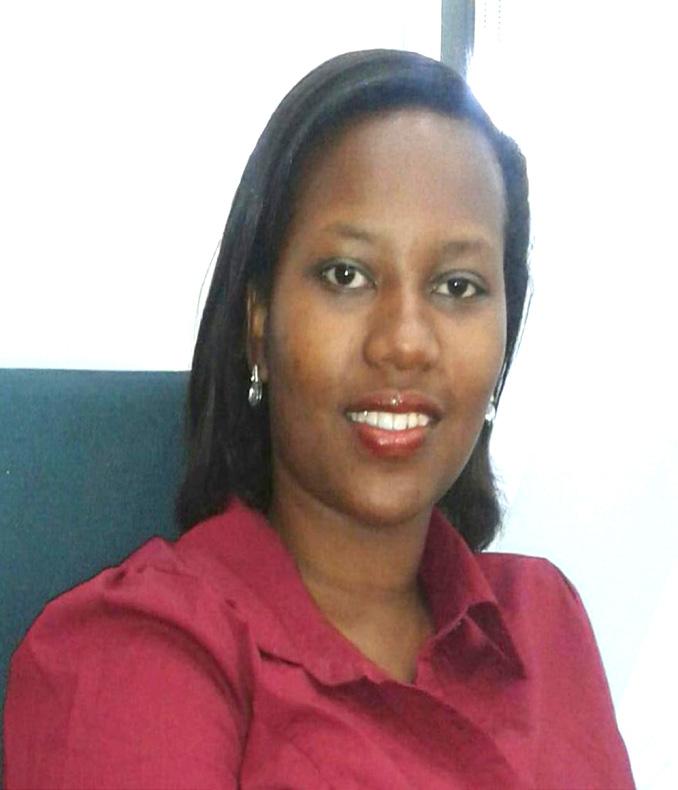
By Peace Mukazi
In Rwanda, approximately 60% of the population is the youth aged 17 to 35 years. This clearly shows that young people are the future of Rwanda and that they can as well be the future of the East African Community (EAC) if they are fully involved in the regional integration process. I strongly believe that youth hold the key for the success of the EAC integration process but they have to embrace it in order to make their contribution in building a better East Africa stand out.
However, across the region, the youth are also faced with challenges, and top on the list is the issue of unemployment. East African youth are yet to fully integrate into the regional job market. There is an underlying fear that once they apply for jobs in the partner states other than their country, they may not succeed. But this fear should be abandoned and instead, the youth should focus on trying to make connections that would lead to sharing of information on available jobs. This will however happen if the regional youth take up the challenge to learn about the EAC integration process, its benefits and challenges and how they can actually participate in every stage of integration to make it work for them and others.
But still, the fears of the young East Africans to cross borders in search of employment are strongly grounded as far as the issue of skills is concerned.
Regional employers—both governments and private sector— continue to claim that the regional youth are less skilled meaning that they are not ready for the job
market.
This lack of skills has been a thorny issue for many decades and it doesn’t go away even at the time when learning has been eased with the use of internet.
A critical assessment of the skills situation in the region reveals that the education systems in the region are to blame. However, governments, which set curricula, also share the blame because these curricula are the foundation of knowledge. As the region embarks on fasttracking integration, more focus should be directed at building the confidence of the young East Africans so that they can look beyond the borders of their sovereign states and exploit regional opportunities. Governments should also work closely with teaching institutions to come up with the hands-on curriculla that will spur skills development, something that will improve the attractiveness of the regional youth on the regional job market.
The youth should also try their best in finding these regional opportunities and sharpening their knowledge arrows so as to be able to penetrate the regional market. As a youth ambassador in Rwanda, my goal is to create an environment whereby we work together to help each other and develop ourselves together for the best of my country but also my region, East Africa. Long Live EAC! The Writer is Rwanda’s Youth Ambassador in the EAC.
Q&A
EAC is secure-Hon Abdul Karim Harerimana
Hon. Abdul Karim Harelimana.
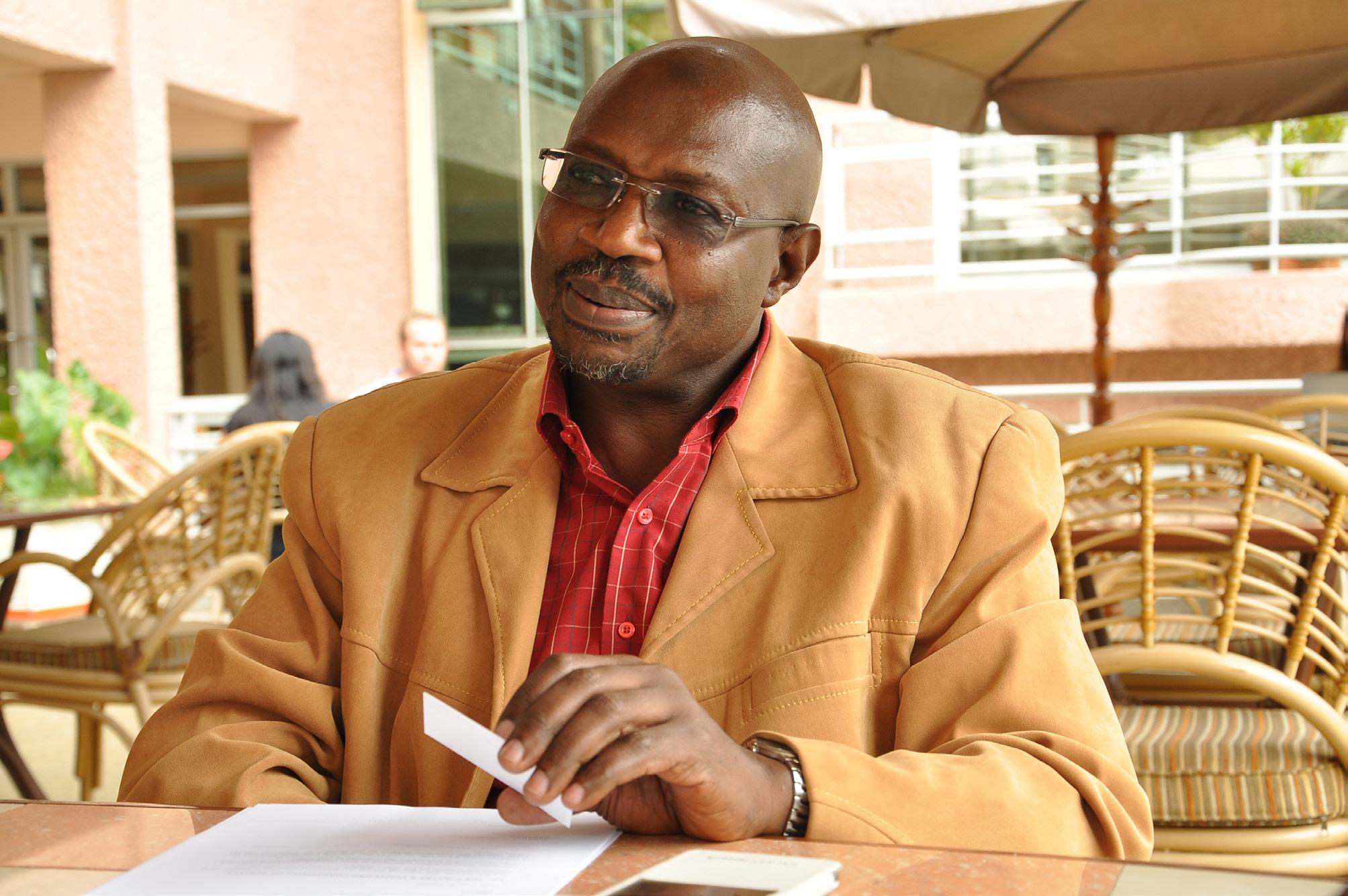
The East African Community has recently increased cooperation in peace and security. But the rise of terrorism has also been noted as a threat to the region. Hon. Abdul Karim Harerimana, a member of the Committee on Peace and Conflict resolution in the East African Legislative Assembly (EALA) talks about the role of the regional parliament and the preparedness of the region in dealing with any peace and security threat to the East African Community. He spoke to
Integration Affairs Magazine.
Read the excerpts: What is the role of the Committee on Peace and Conflict Resolution of the East African Legislative Assembly (EALA) in ensuring security and conflict resolution in the region?
When conflict arises, the committee has a right to make a follow-up on it and have meetings with partner states and later report back to the house. The committee can also make suggestions on prevention measures before any conflict arises and that is why we have in place a bill on conflict management. It’s a private member’s bill initiated by a member from Rwanda and it was passed by the house last year [2013]. www.mineac.gov.rw Can you elaborate more on this bill?
EALA organized a conference on peace and security in the region which took place in Bujumbura and one of the resolutions was to have a bill about conflict prevention, resolution and management. Former member of EALA representing Rwanda, Dr. Pierre Damien Habumuremyi initiated the bill and by then I was the Chair of the committee. The bill was passed by the house. I think prevention is better than cure because if you wait for things to happen and you come to resolve them, sometimes it would be too late. We have ample examples in this country [Rwanda] on genocide.
Nothing is worse than genocide but looking at our country today after the genocide and you compare it with before genocide the difference is just like earth and sky. So, this is mainly what is in that bill. What do you consider as a major security threat to the East African Community (EAC)? As individual member countries, internally, I can say that we are alright for the time being. Rwanda is safe and very peaceful compared to other Partner States. Uganda, a few years back, had the problem of ADF [Allied Democratic Forces] and LRA [Lord’s Resistance Army] rebels led by Joseph Kony. In Kenya there are threats by the terrorist group Al-shabab. In Tanzania there are threats of terrorism. I think you remember that terrorists attacked the American Embassy in Dar es Salaam and what took place in the recent months in Arusha where terrorist groups attacked with grenades. In Burundi, there are small internal problems and people say that most of them are political and I think they can be brought under control because they are not very serious.
Why has it taken long to eliminate dangerous groups such as ADF, LRA and Congo based FDLR which is a threat to the Rwandan security? Is EAC ready to confront any insecurity threat and emerge a winner?
The East African Community is ready to defend itself from any threat. You know security and peace are the backbone of development of any country in the world. When you don’t have security you are not peaceful and you can’t dream of development because what you are trying to build can be destroyed any time. So among the issues which took long in negotiations in our region is the issue of peace and security. There is a memorandum of understanding among the Partner States but in practice the Armed forces in the East African community meet to discuss issues of peace and security. They meet and exchange ideas and train together. There are various joint trainings that have been conducted together in all five countries.
The Intelligence departments also meet and share information to fight criminals, drug trafficking, human trafficking and other threats to peace and security of the community. What can other regions learn from
These forces don’t need the whole region to intervene and fight them and they are not in any of the EAC Partner States. FDLR is in Congo and we are told that they are now only 2000. They have reduced because Rwanda has sought to mobilise and re-integrate them into society owing to good governance. The LRA took long because it was also in Sudan which is also not a member of the East African community. EAC in terms of peace and security? I think there is a lot other regions can learn from us. I think the East African Community is so far doing better than all of the other regional blocs in security and peace matters. Most Partner States of the East African Community have elections in the coming years. Burundi and Tanzania will hold elections in 2015 followed by Uganda in 2016 and Rwanda in 2017. Quoting the past experience some member states have held violent elections. Take an example of Kenya’s elections in 2007 where people were killed after the elections. The same situation can happen in any of the partner states. How is EALA particularly the Committee on Security and Conflict Resolution prepared to ensure peaceful elections in the partner states? I think conflicts during elections or after elections are not rampant in the region because the last time we saw it was in Kenya during the 2007-2008 elections.
Post-elections conflicts have greatly reduced in Burundi and Uganda. Rwanda is stable. You people should thank God no single incident has been reported. We have observers from the East Africa Community who monitor the elections process and report back.
EALA is ready to play its role so that no single conflict will arise from elections in the Partner States.
Focus on Integration Stages
Status On Free Movement Of Capital
The East African Community (EAC) Common Market Protocol (CMP) is one of the more ambitious regional integration agreements globally. The Protocol covers several freedoms and rights. To enable free movement of capital, 20 operations related to securities, direct Investments, Credit operations, and personal capital operations are required to be free of restrictions.
Removal of restrictions
Table 1 provides an overview of the number of restrictions removed and type of restrictions in place in each Partner State..
Partner States Score Restrictions Restrictions in Place removed
Burundi 44.4 % 4/9
Kenya 80 % 16/20
Five, and several capital market operations do not have regulatory frameworks None, but four operations require government approval Rwanda 95 % 19/20 One
Tanzania 14.2 % 2/14 Numerous restrictions across 12 capital market operations Uganda 85 % 17/20 ree
Source: World Bank /IFC
For Rwanda the study found that the Capital Market Act of 2011, the Law establishing the Capital Market Authority, and the 2010 regulation on Foreign Exchange Operations have been implemented which removed all prior restrictions. The loss of 5 points was due to one capital market restriction remaining in place. It was found that Rwanda requires firms to obtain a loan registration certificate from the central bank for any foreign borrowing if subsequent repayments are to be allowed.
Status of compliance on free movement of capital
The pilot study gave Rwanda a 95% score on compliance while Burundi and Kenya scored 44.4% and 80% respectively. Tanzania and Uganda scored 14% and 85 % respectively.
Free Movement of Services Introduction
For free movement of services, the EAC Partner States have concluded negotiations to liberalise 7 of 12 sectors currently covered by the Wold Trade Organisation’s General Agreement on Trade in Services (GATS). They have also committed not to introduce new restrictions, and to eliminate the existing ones.
Focus on Integration Stages
Status of removal of Non - Conforming Measures (NCMs)
Table 2. Number of NCMs affecting modes of supply
Country Cross border consumption supply Abroad Commercial Presence
Burundi 1 Kenya 7 Rwanda 10 Tanzania 15 Uganda 6
Total 39
Share of Total NCMs affecting each mode(%) 54% 0 0 0 0 0
0
0% 5 15 8 15 5
48
67%
Presence of a Natural person
7 16 9 17 10
59
86%
Country
% Rwanda Burundi Kenya Uganda Tanzania Compliance with tariff schedule 20 20 20 20 20 20 Adoption of rules of Origin 20 20 20 20 20 20 Use of charges of equivalent effect to tariffs 30 30 27 24 21 18 Recognition of certificates of origin 16 14.4 16 14.4 11.2 8 Compliance with EAC Council Recommendation about issuance of certificate of origin by customs authorities 7 7 7 7 7 7 Compliance with Customs Union Protocol 7 0 0 0 0 0
Total (%) 100% 91.4% 90% 85.4% 72.2% 66%
3. Free movement of goods
For free movement of goods , all Partner States are required to remove Internal tariffs, implement a common external tariff (CET), remove non- tariff barriers to trade among other commitments. If fully implemented, these measures will have a profound and positive impact on the economies of Partner States.
Status of compliance in all Partner States
To assess progress by Partner States in building a common market, the scorecard examines their compliance with four commitments from Article 5(2) (a) of the Common Market Protocol.
Source: East African Common Market Score Card 2014.
Focus on Integration Stages
• Elimination of tariffs and equivalent measures on intra-regional trade • Elimination of Non Tariff Barriers(NTBs) • Implementation of a common external tariffs (CET). • Harmonisation and mutual recognition of sanitary and physanitary standards (SPS) and standards preventing technical barriers to trade (TBT)
The analysis led to the following findings about compliance with the obligation to eliminate NTBs:
• Of the 51 reported NTBs Tanzania has 18(35% of the total), Kenya has 16(31%), Uganda has 9(18%),
Rwanda has 5(%), and Burundi has 3 (6%) NTBs. • NTBs are most often linked to rules of Origin , sanitary and phytosanitory measures, charges of equivalent effect and technical barriers to trade.
1. TIME REDUCTION ALONG THE TWO CORRIDORS (IMPORTS/ EXPORTS)
2. COST REDUCTION ALONG THE TWO CORRIDORS (IMPORTS/ EXPORTS)
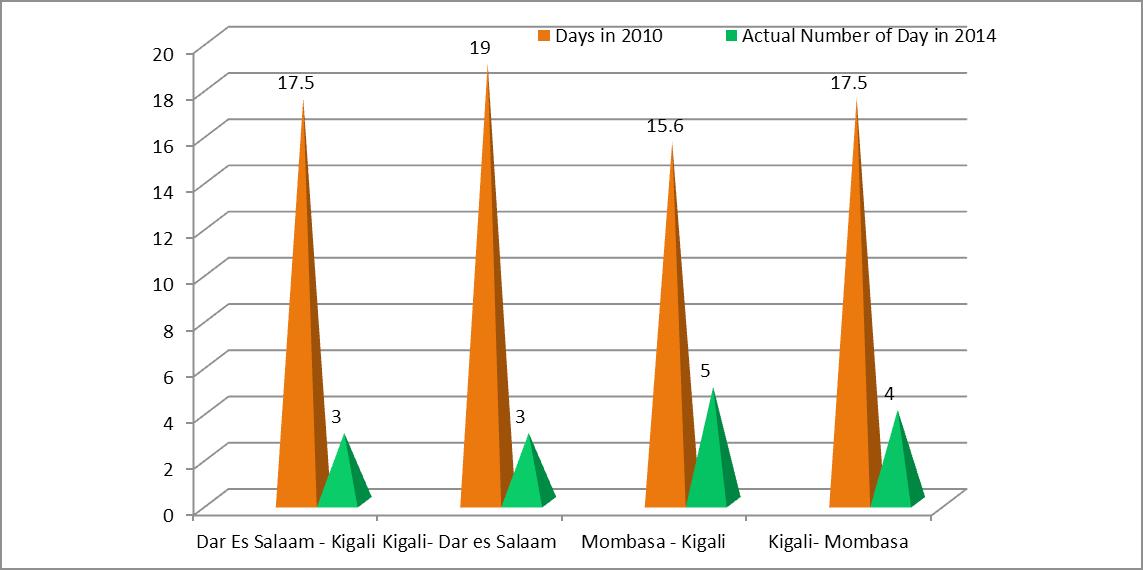
Source: Rwanda National Monitoring Committee on NTBs
Source: MINICOM www.mineac.gov.rw July-Dec 2014 43
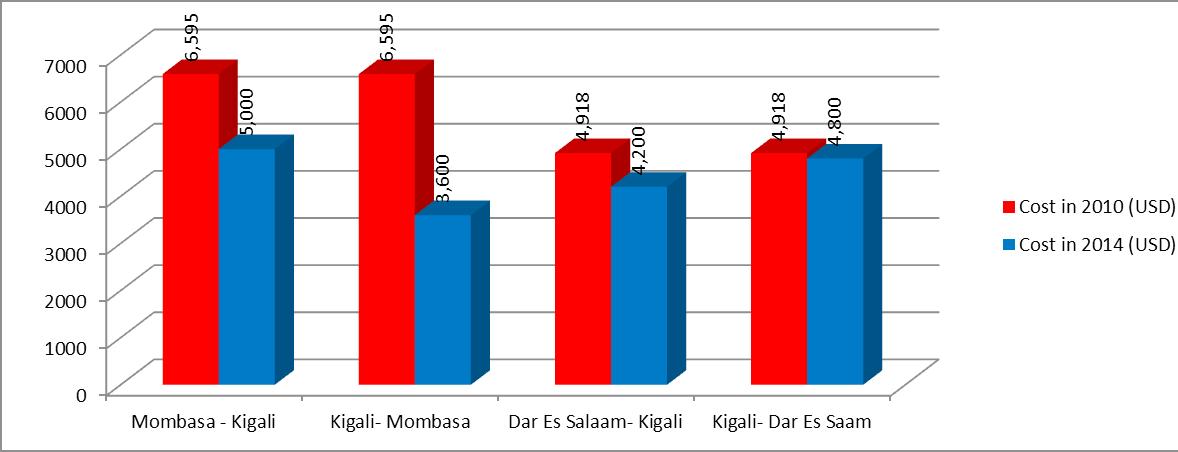
Culture Culture Rwanda promoting use of Swahili to deepen EAC integration
Dr Cyprien Niyomugabo President of Rwanda Academy of Languages and Culture
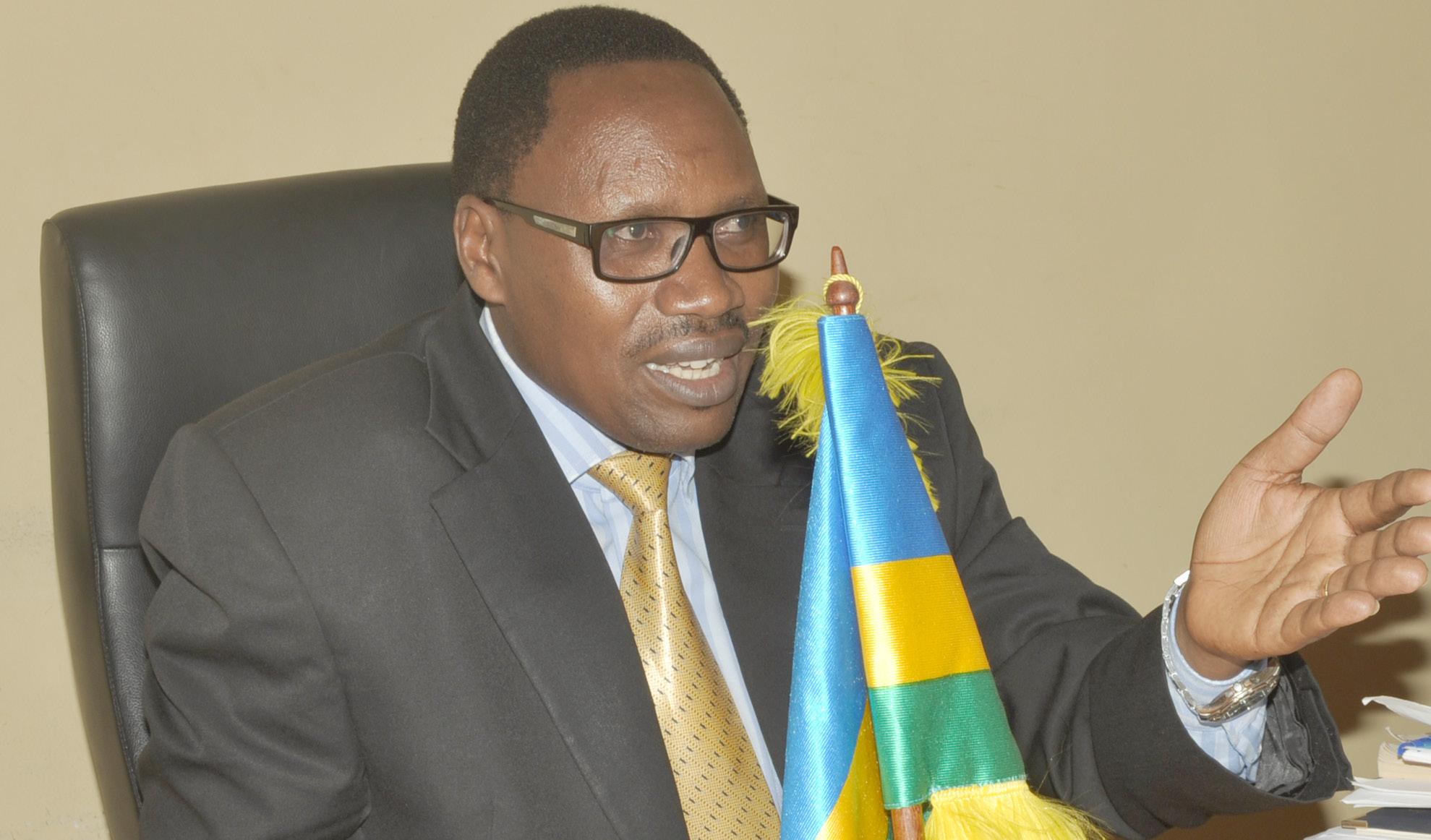
The Swahili language or Kiswahili is a Bantu language and the mother tongue of the Swahili people. It is spoken by various communities inhabiting the African Great Lakes region and other parts of Southeast Africa, including Tanzania, Kenya, Uganda, Rwanda, Burundi, Mozambique and the Democratic Republic of Congo. In Rwanda, it is said that Germans introduced Swahili to Rwanda the time they colonized the country. However, when Rwanda fell in the hands of Belgians, the Swahili language was abolished. But in the 1970s, Rwanda signed a bilateral agreement with Tanzania to promote education sector where Tanzania would provide Swahili teachers to teach in Rwanda and Rwanda would send French teachers to Dodoma. This re-introduced the language although it remains less popular in the country. Language experts urge that Rwandans must learn Swahili if they are to penetrate and benefit from the East African Community (EAC) integration process. Swahili is the most spoken language in Tanzania and Kenya and it it is least spoken in Uganda, Rwanda and Burundi.
Previously known as the language spoken by soldiers, the Swahili language has progressively turned out to be an important tool used in various areas including business, political and social-cultural settings. As EAC integration deepens, those who can’t speak Swahili are rushing to learn it.
Governments where Swahili is less used such as that of Rwanda have embarked on teaching their citizens the Swahili language with intentions of preparing them to gain from the regional integration. Dr Cyprien Niyomugabo (PhD) is the Dean, School of Education, University of Rwanda and the president of Rwanda Academy of Language and Culture. He says that the College of education (former Kigali Institute of Education) has introduced public programs where every Rwandan can join to learn Swahili. Every year, about forty students at College of education graduate and get Bachelor’s degree in Swahili. According to the Dr Niyomugabo the college will soon introduce master’s programs and Doctorate program aimed at equipping Rwandans with capability to use the language within the region.
“There was a negative attitude towards Swahili where it was considered to be a language used in robbery but now it has changed. Without Swahili, you cannot transact any business in some of our countries in East Africa. Next year we shall introduce a certificate program where everyone can join and learn Swahili,” he said
In Rwanda, they are five Rwandans with PhDs in Swahili and the number is set to increase as the government embarks on teaching the language. “Our neighboring countries in DRC and Tanzania speak Swahili and there are a lot of business opportunities, however, we cannot tap into these opportunities. However, we understand and learn Swahili,” Dr Niyomugabo added. He said everything is in place to ensure that in ten years at least every Rwandan will know the basics in Swahili.
“We want our people to compete favorably on the regional market.” Swahili has been fronted as the language of identity within the EAC, with key symbols of integration like the bloc’s anthem in the language. On the regional level, a protocol establishing the Swahili commission was signed as a tool to provide advice to the partner states on all matters related to Swahili research, learning, and teaching and policy formulation development. Over 150 million people speak Swahili in the East and Central Africa.Wellace Mlagais, a Tanzanian national and a Swahili lecturer at the College of Education of the University of Rwanda, believes that Swahili should be promoted among all the five countries.
He mentioned that Swahili is simple to someone who understands Kinyarwanda.
Umuganura: Preserving Rwanda’s cultural heritage
On August 1, 2014, Rwanda celebrated Umuganura, a tradition that is deeply rooted in the Rwandan culture.
Umuganura literally means “National Harvest Day” and it is a Rwandan cultural practice of sharing new harvests at the end of a harvest season.
Just like the previous generations carried out Umuganura, the present generations try to fit in the same shoes to make it as exciting as it was in the past. Celebrated for three consecutive years since 2012, the National Harvest Day is seen as a noble cause to preserve the Rwandan culture and traditions. During the 2014 Umuganura, various activities were carried out. High on the agenda was visiting the Inyambo, longhorned Rwandan cows at Urukari, the King’s palace in Nyanza District, Southern Province.
Inyambo occupy a huge space in Rwanda’s culture especially in the past when they were seen as symbol of wealth and prosperity. The celebrations also included various exhibitions of Rwanda’s achievements. Past cultural articles such as baskets and calabashes and a carnival walk.
Guests during the National Harvest Day were treated to warm and energetic performances, composed mainly of the cultural-based dances, Intore and Amaraba. Boiled Maize and milk were served to the adults and children respectively during the Umuganura day at Petit State in Remera.
The first Lady Jeannette Kagame was the guest of Honour during the National Harvest Day, where along with other parents, she served milk to children. Serving milk to children is one of the cardinal traditions of Umuganura. As Rwanda actively promotes cultural tourism, it is hoped that reviving some of the country’s cultural traditions such as Umuganura will help attract more tourists, something that can boost tousirm revenue.

Press Release
We are happy to announce the First Edition of MASHARIKI AFRICAN FILM FESTIVAL. It will be held from the 8th to 14th March 2015 in Kigali/ RWANDA. The festival has lined up various activities to bolster film making. These include workshops, film screenings, training, discussions, peer networking and mentorship programmes. As the festival plans to reach high gear, we are not only interested in the quantum of numbers but also on the quality of films that will be submitted thereto. Once again, the festival will provide an expression platform for both established and emerging talent in feature, documentary and short films genre of film making while reaching a wider audience. The festival seeks to celebrate the East African Film Network ( EAFN) and African achievements of filmmaking, recognise relevant exemplary performance and success in film making, encourage innovation, creativity and intellectual interaction among film lovers, The theme of the first Edition of Mashariki African Film Festival is “AFRICA, WE CHERISH OUR STORIES”. It is envisaged that the selected films will offer a nostalgic experience and bring forth “many down memory lanes.” We will tag on the audiences sentimentalities and motivate them to share the African stories experience. The best films will be screened during the festival. The distinguishing characteristic of this concept is that it will support the creative cultural expression while introducing film as a business. We will organise a 2 weeks production workshop and produce 4 short films. We aim to have 14 Rwandan participants and all the films will be screened at the closing ceremony of MASHARIKI AFRICAN FILM FESTIVAL. The deadline for all application was 30th January 2015 respectively. Tresor SENGA, President of the Festival Joel KAREKEZI, Festival Director Head office: KIGALI CITY, NYARUGENGE DISTRICT PO.Box 1925 Kigali-Rwanda Tel: +250788881381/0788734402/0788703635 E-mail: info@mashariki.rw Website: www.mashariki.rw / www.maaff.rw
Integrating Through Music
There’s something distinct about music. Everyone seems to like it yet very few will exactly point out why music is special to them. It seems to make people get hyper in a way that is beyond their understanding. Many will simply tell you that it speaks to their hearts. To musicians themselves, it is a way of living and a means of passing on information that is social, religious, political or otherwise.With the integration of the East African Community (EAC), musicians are not only eying a wider market for their music but also an opportunity to share culture and beliefs. “For a complete integration, there’s need for peoples of the region to know more about each other’s cultural beliefs,” says Masamba, a singer of traditional songs in Rwanda.“Otherwise how will East Africans freely interact when they are ignorant about each other?” he wonders, adding that only music can achieve that. So how will musicians accomplish that? “In my case, our group – Gakondo - is soon introducing Rwandan Nights in Nairobi and Kampala. Like I said, sharing cultures is the best opportunity to merge communities,” says Masamba. He has been performing across the region. He is always the star entertainer at Jose Chameleone’s annual concerts in Kampala. He has also done collaborations with other singers in East Africa like Kidumu (Burundi) and Ragga Dee (Uganda). “And something with Chameleone may soon come your way,” he spills. Tusker Project Fame (TPF) is a music academy that searches for talented singers in the five East African countries and helps them to launch a music career. Fatuma Muhoza is Rwanda’s former representative to the academy. She says that the integration of EAC came long before even the politicians started flying from capital to capital to sign policies.” Lately, more artistes from the EAC have done collaborations than before. The most recent hit is Take It Off by Rwanda’s Urban Boys and Uganda’s former Blu*3 star Jackie Chandiru. These cross-border collaborations are, however, more of an achievement in market expansion than anything else. “The market for Rwandan music has been meager,” says Masamba. Compared to Kenya, Uganda and Tanzania, musicians in Rwanda haven’t reached a level where they can make a decent living out of their careers.” He adds that with the integration of the EAC, musicians in Rwanda will benefit from a wider market.
Musicians the world over believe that music is a universal language understood by everyone regardless of their nationality, race, religion, etc. Muhoza says: “From love to poverty, we all know about it… just come up with a theme and there will be tens of thousands who will easily relate to the message,” she observes. Her observation is shared with Masamba. “If the (Rwandan) government wants to implement policies, to promote tourism or anything else, then there’s no better channel than music,” he says. “Musicians reach out to millions of people far more than politicians do,” he adds. If Masamba believes in sharing cultures through performances, others are looking at it terms of relocating from one East African country to another. One such person is Cwinyai Raymond aka H.E Wenda. He and his younger brother, Osaga Emmanuel aka O.S Emaxxy have been singing since 2007. “These other countries are already ahead. We felt we had something to share with Rwanda and grow with it. We’ve so far done a song with Micho The Best called Let Me Follow My Way and we may out another one soon with Urban Boys,” says Wenda. Lauren Makuza is the Director of Culture Promotion at the Ministry of Sports and Culture. He says the ministry has highly prioritized the integration. “For instance Rwanda was the first to host the East African arts and culture festival (JAMAFEST) in 2013. Each of the EAC countries sent a choir of about 50 people,” says Makuza. He adds that they will soon put in place laws to protect Rwandan musicians so that they have equal benefits with regional singers. Masamba Intore
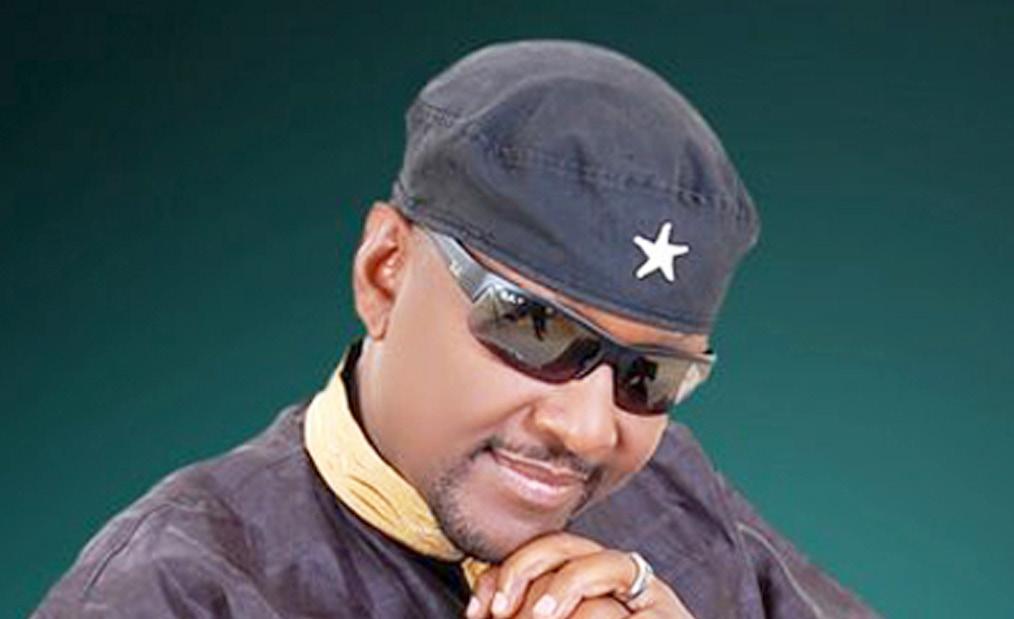
Sport Rwanda to host Cecafa Senior Challenge Cup and 2016 Chan
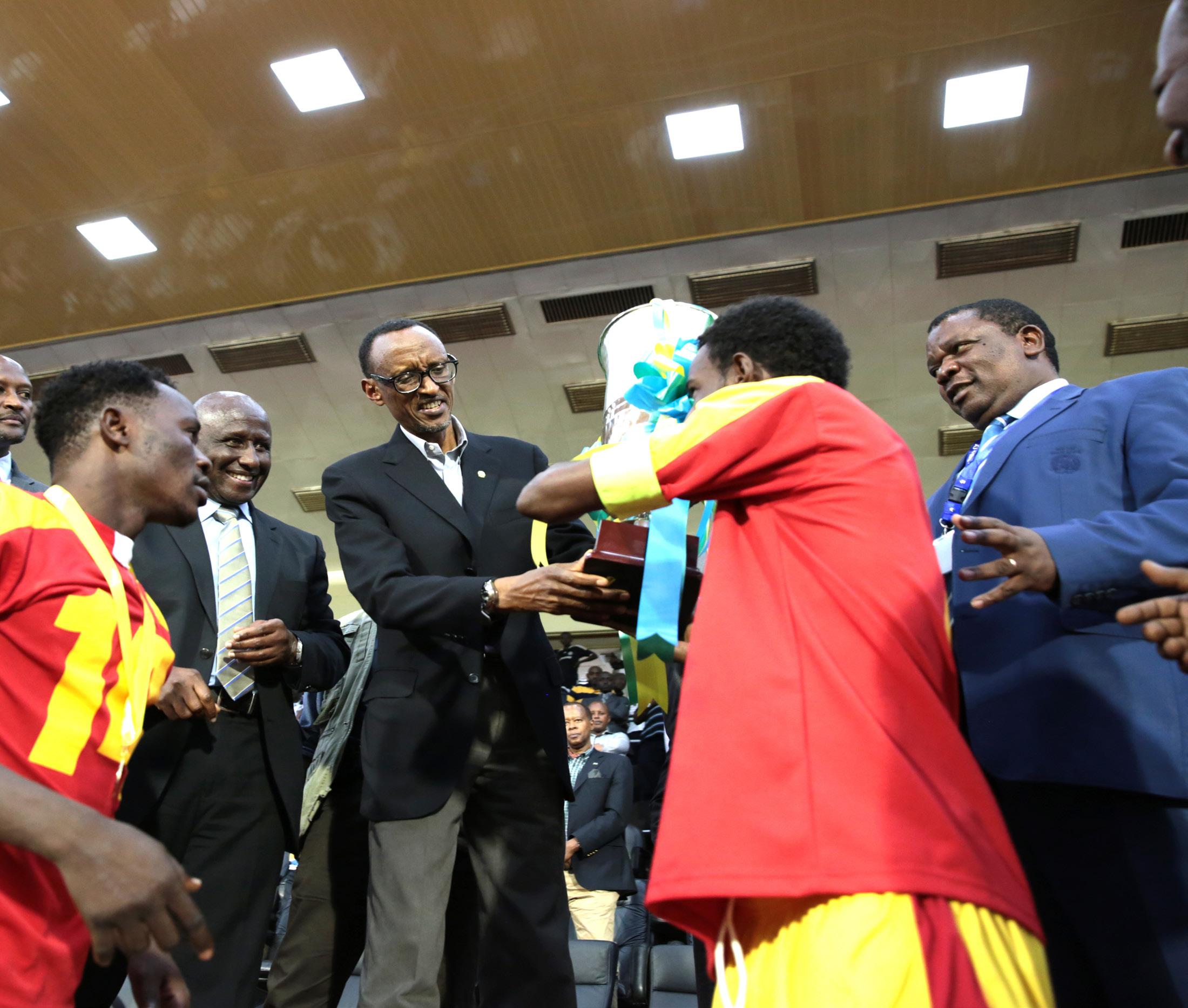
President Kagame Awarding CECAFA KAGAME CUP Champions El Mereikh
Rwanda will host November this year the Cecafa senior Challenge Cup ahead of the The lone goal was netted by Kenyan striker Allan Wanga after a good cross from skipper Ahmed Elbasha. It was the second consecutive year in 1988, while the Rwandan army side was looking to win it for the fourth time on home soil, following successes in 2004, 2007 and 2010. preparations of the 2016 CHAN. Rwanda successfully hosted Cecafa Kagame Cup in 2014, which was won by El Marriekh of Sudan after beating Rwanda’s APR 1-0 at the Amahoro Stadium in Kigali. that APR has lost in the Cup final after losing to Vital’O of Burundi in 2013 in Sudan while it was the first time they lost Cecafa at home soil. It was the third regional title for the Sudanese giants, who last won it The two-week tournament, which is sponsored by President Paul Kagame of Rwanda, is the most popular football tournament in region and attracts about eleven teams.
Despite the sports element, the tournament provides a platform for the countries to learn from each other in various fields including culture, developing skills for younger talented sportsmen as well as providing limelight for Rwandan soccer players on the international scene. President Kagame contributes $60,000 annually as prize money to the tournament named after him since 2002. He is also the patron of Cecafa.
For the first time in the tournament, the Rwandan Police Football Club clinched third position in their debut appearance in the annual regional tournament after they defeated Ugandan champions KCCA on spot-kicks 4-2 after both sides drew 1-1 in normal time. El Mereikh, on top of the trophy, took home a cash prize of $30,000, APR walked away with silver medals and $20,000 for finishing second, while third-placed Police FC took $10,000 in addition to bronze medals.
In addition, Rwanda will next year host the Cecafa senior challenge cup after it was hosted by Ethiopia in December 2014. Rwanda will also host the 2016 African Nations Championship (Chan) that will draw 16 countries from the continent for the first time.
This means that it will be a good opportunity for preparations for the continental event and this is the time to prepare for the competition that attracts Africa’s biggest and spirited local football talent.
Rwanda is a potential candidate to host the continental and regional tournament. Rwanda has had a good history of hosting the Africa tournaments including two successful African youth football competitions in three years such as 2009 U-20 as well as the 2011 U-17 championships. Kigali has also hosted the oldest football tournament in Africa – the Cecafa Senior Challenge Cup in 1999, 2001 and 2005.
For hosting 2016 CHAN, Rwanda has the stadiums needed for such a competition to take place. The Amahoro national stadium is the biggest stadium in the country with a seating capacity of 30,000 people.
The Kigali Regional Stadium located in Nyamirambo seats 22,000 and has hosted some important Afcon qualifying matches in the recent past. The Umuganda Stadium (Rubavu) in the western province on the shores of Lake Kivu which is currently under re-construction and seats 15,000, while Huye stadium in the Southern Province will have the capacity to se seat 10,000 people after renovation.
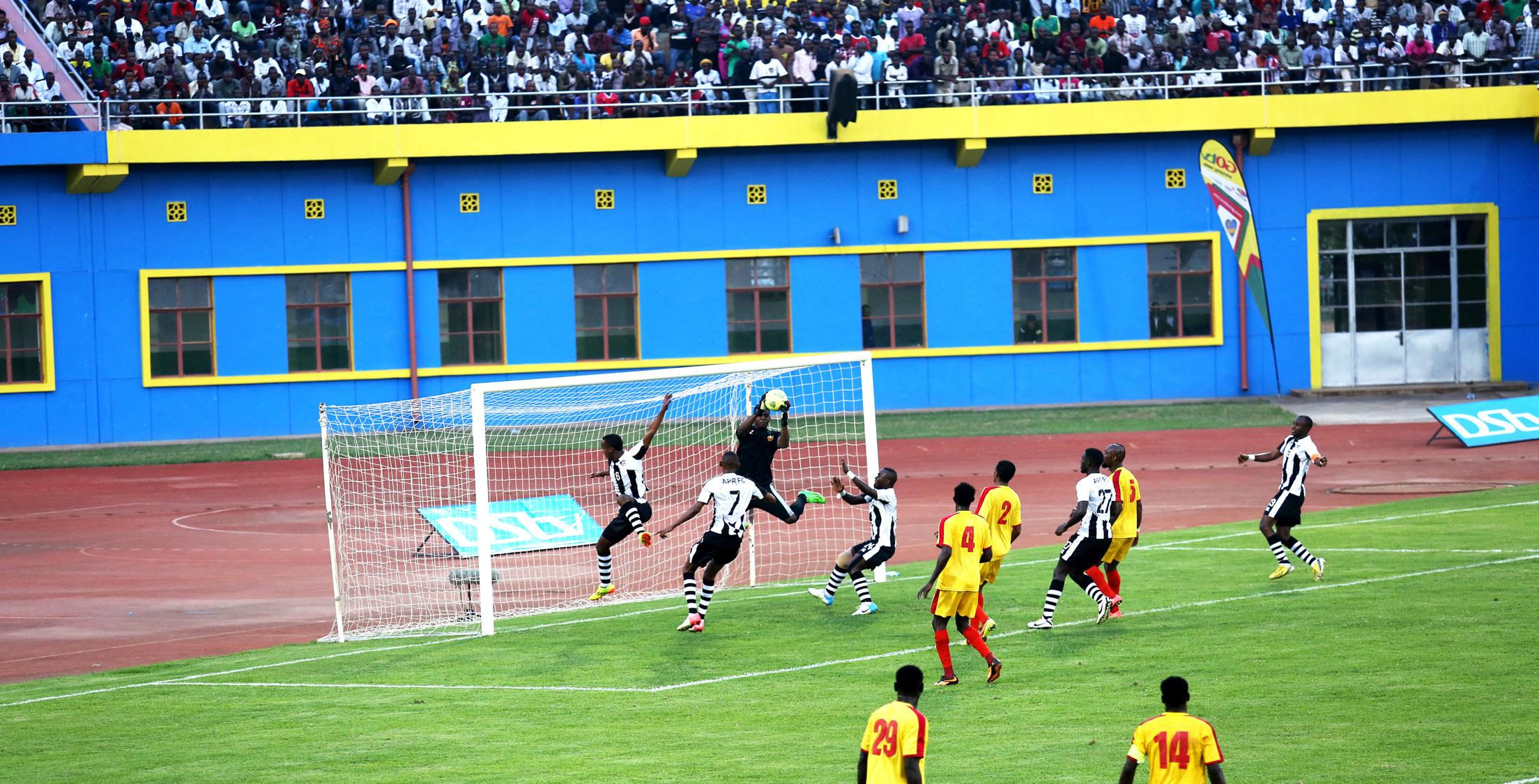
El Mereikh and APR in action during the final match of Cecafa Kagame cup at Amahoro National Stadiuim. www.mineac.gov.rw July-Dec 2014 49
Valens Ndayisenga Wins Tour du Rwanda
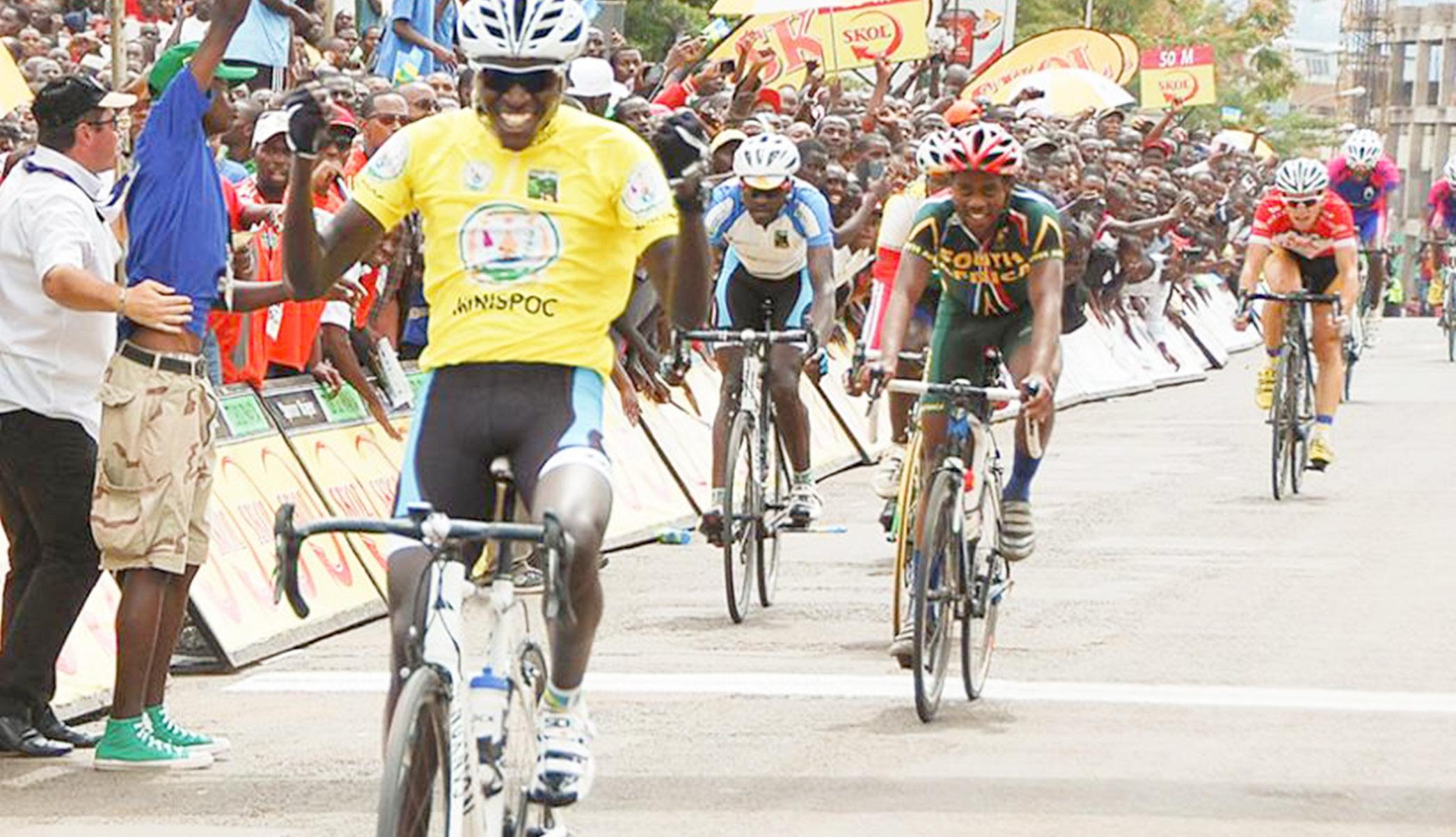
Valens Ndayisenga celebrating his historical win of Tour du Rwanda. Courtesy photo Valens Ndayisenga, Rwanda’s cyclist, won “Tour du Rwanda 2014” cycling tournament, becoming the first Rwandan to be crowned the Champion of the annual event since it was first held in 1988. Ndayisenga, who hails from Kalisimbi, Rwanda’s top cycling club, won Tour du Rwanda in a total time of 24h57’10’, beating off tough competition from his teammates Jean Bosco Nsengimana and Joseph Biziyaremye and Eritrean national Aron Debretsion.“I am really happy; I am excited for what we have achieved. This win is for all Team Rwanda members. We did well, every rider played a key role to get this yellow jersey,” Ndayisenga was quoted. Thousands of Rwandans thronged Amahoro national stadium to witness the event that had attracted different local and international media houses. They cheered after Ndayisenga was crowned as the winner.The cyclist who never completed school has participated in various world cycling competitions and continues to shine as he represents Rwanda. Following Ndayisenga’s win, President Kagame hosted the Rwanda National Cycling team to a reception at Serena Hotel, to congratulate them for winning the Tour du Rwanda.In his address, President Kagame congratulated the winner, Valens Ndayisenga and the entire team, the team coach, the Ministry of Sports and the Rwanda Cycling Federation (FERWACY) for making the country proud. “The triumph of the Karisimbi team is a reflection of the Rwandan spirit; sacrifice teamwork, resilience and discipline. Discipline makes everything sustainable because without it, you cannot expect to keep winning. Instead, you keep experiencing decline,” President Kagame said.
He pledged his support to the team so that it can achieve more, by building on what they already have.“You deserve support because you have earned it. We will ensure that you are not lacking in anything that you need to perform better. We will avail the tools you need and leave the rest to you to realize your potentials.”










